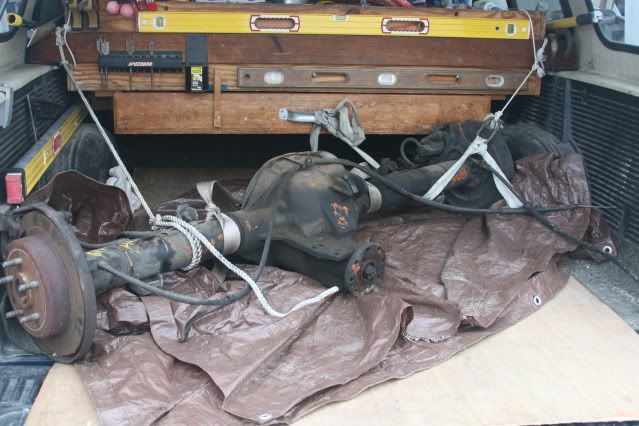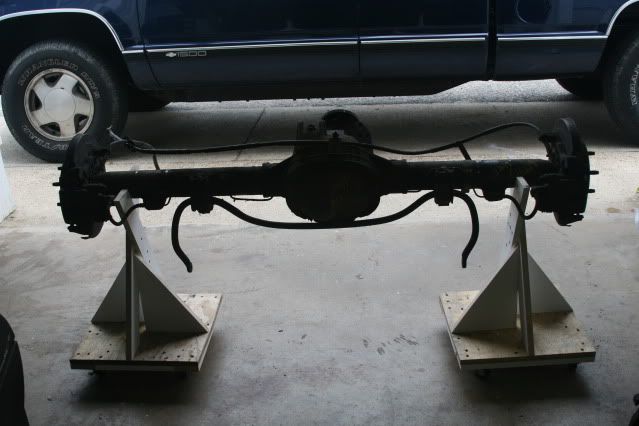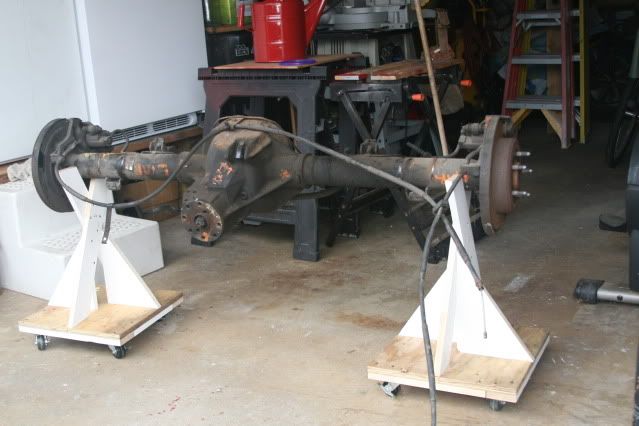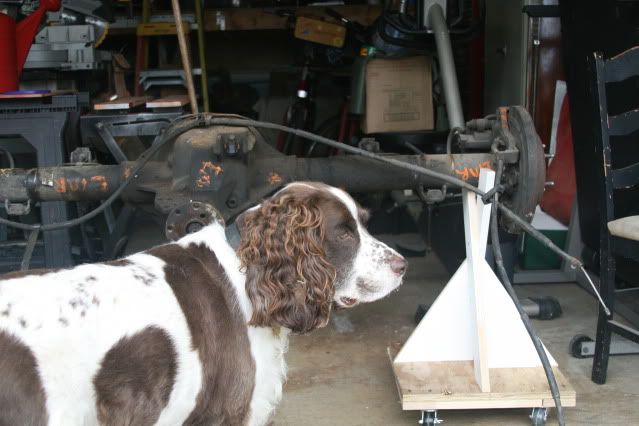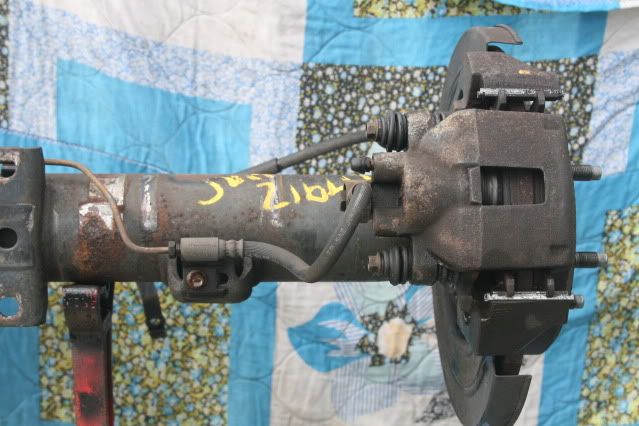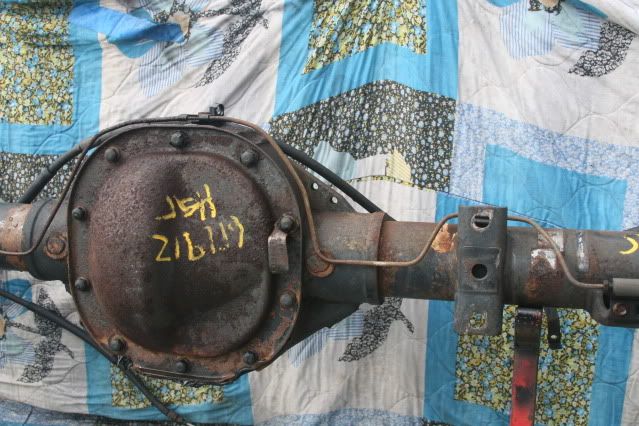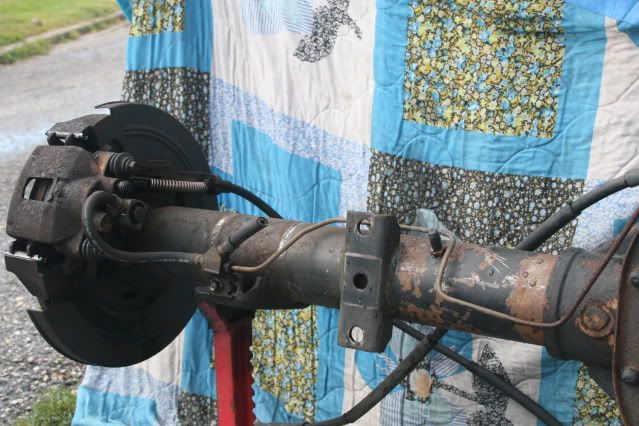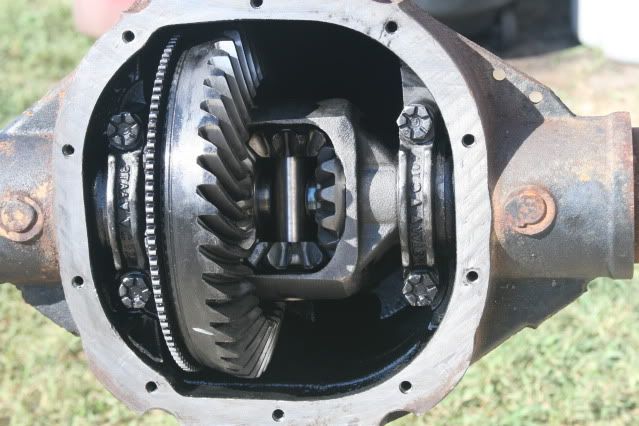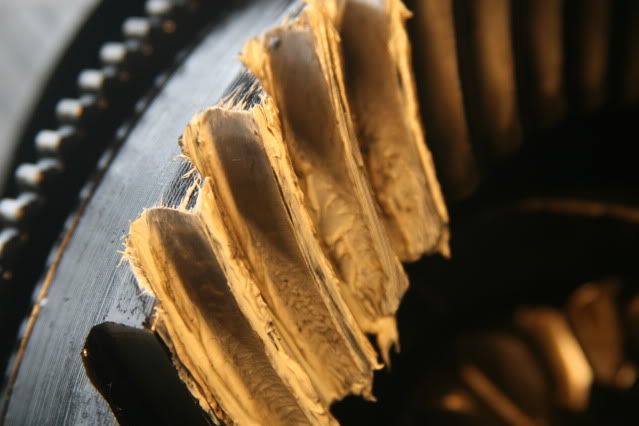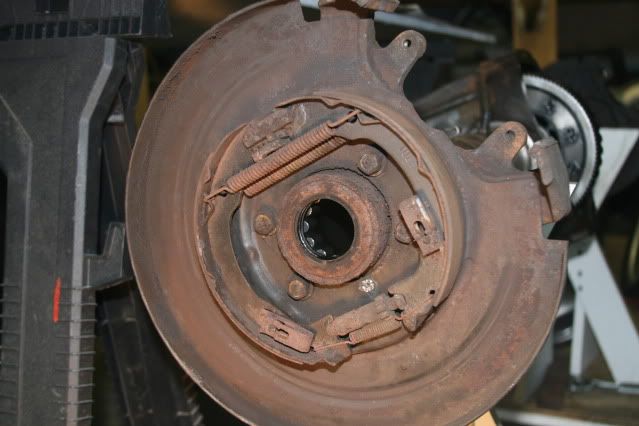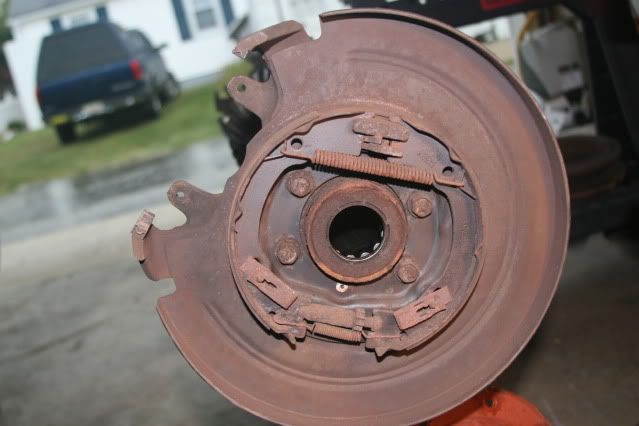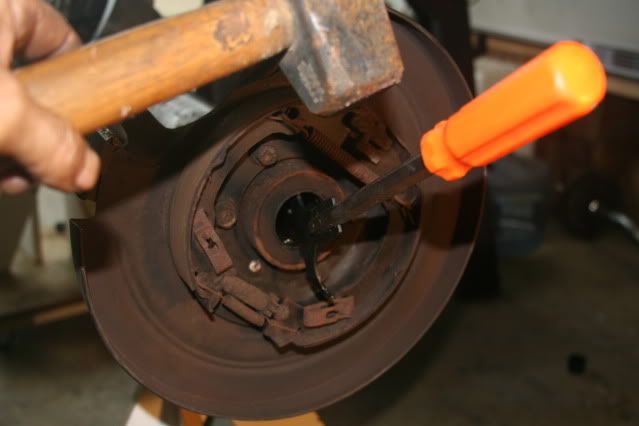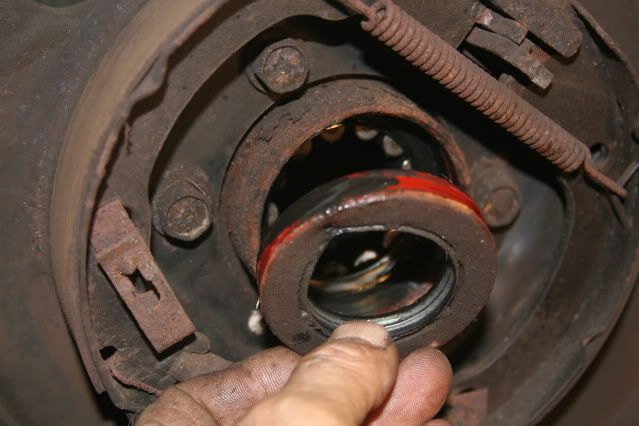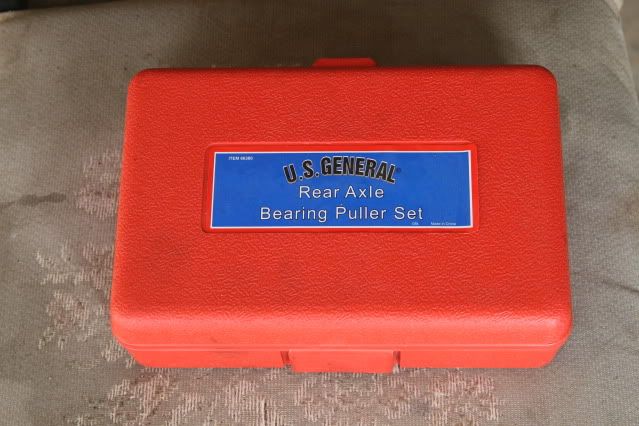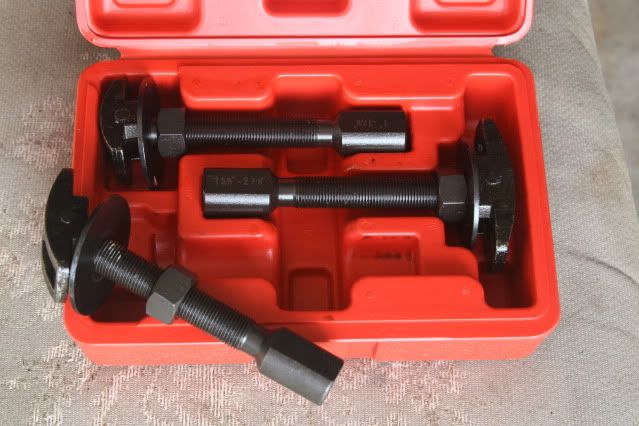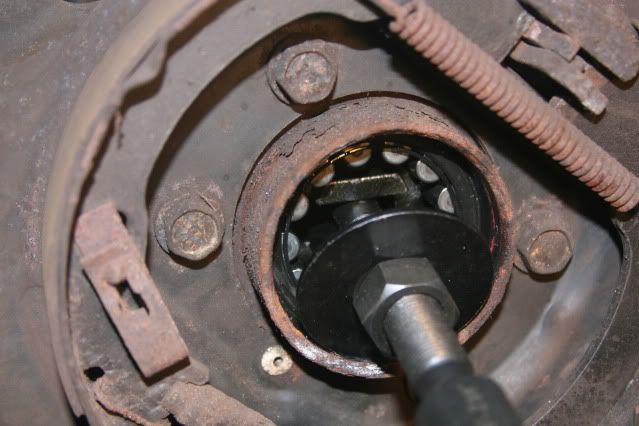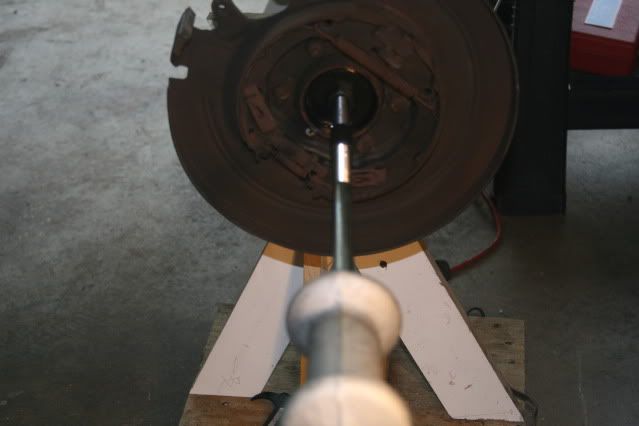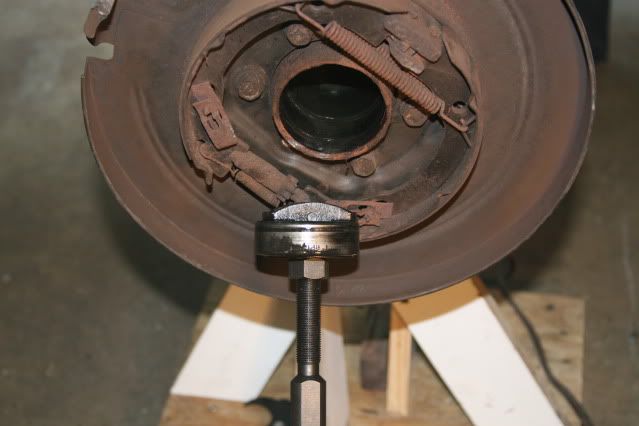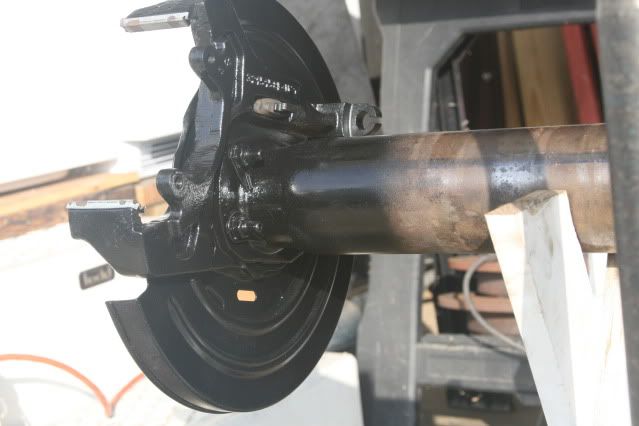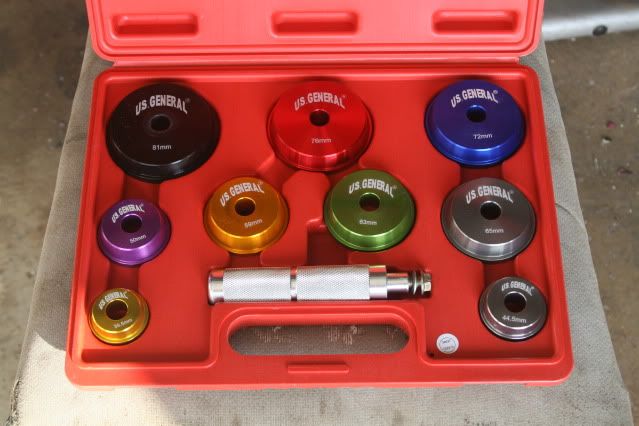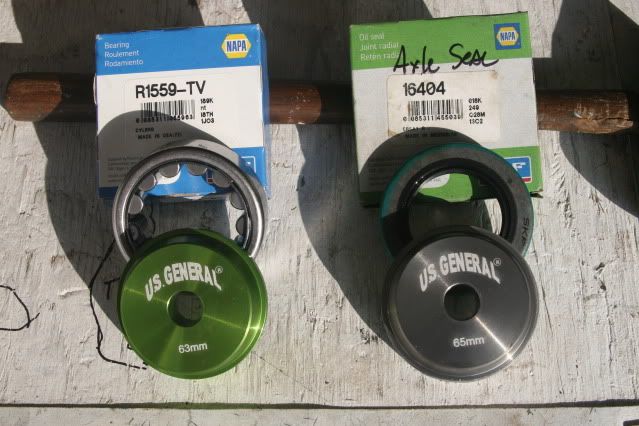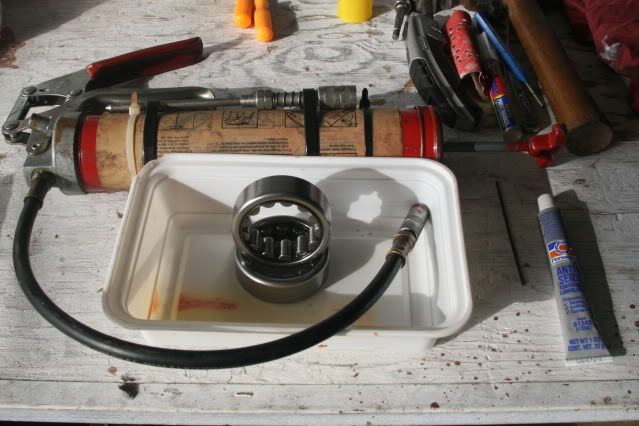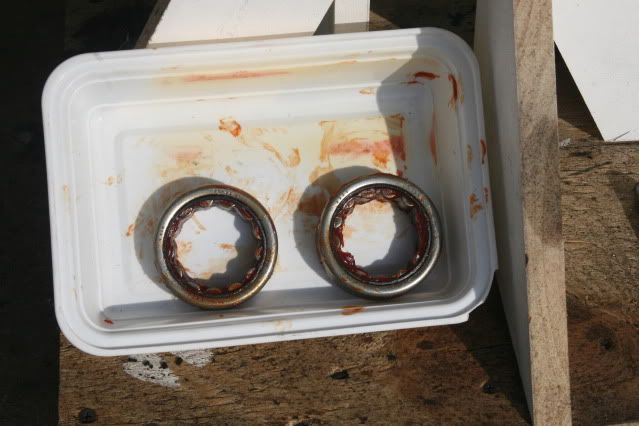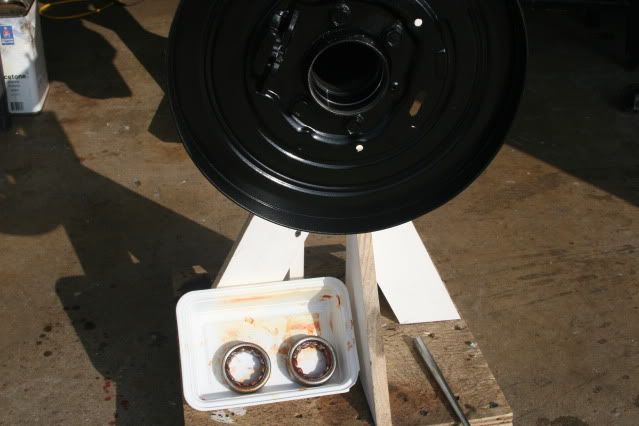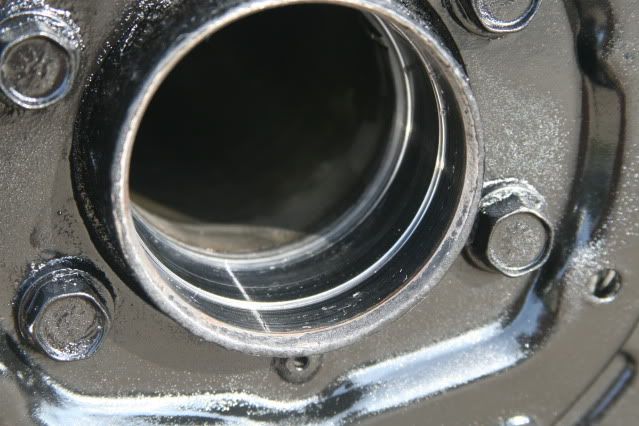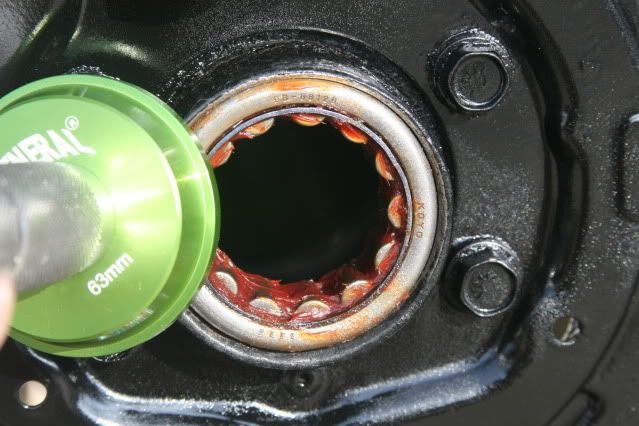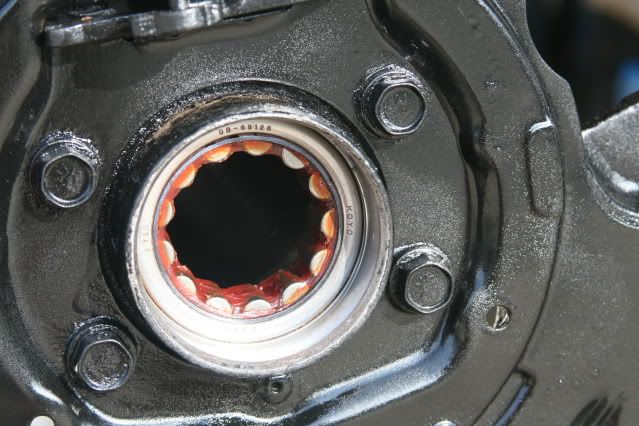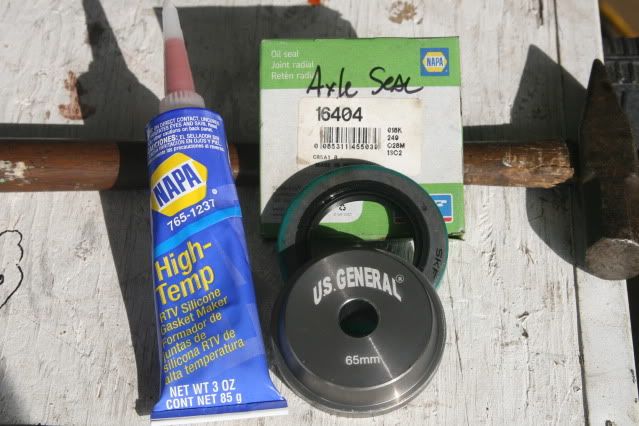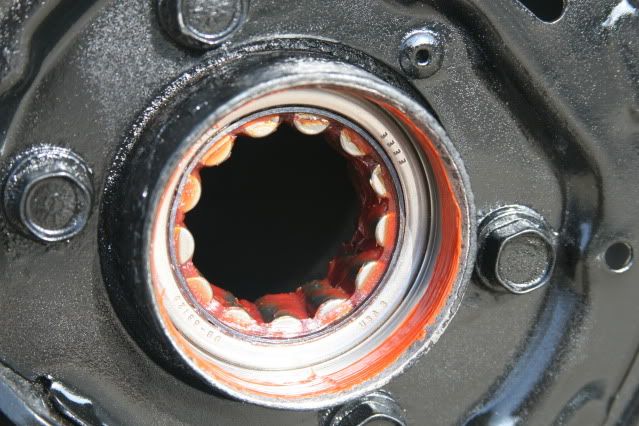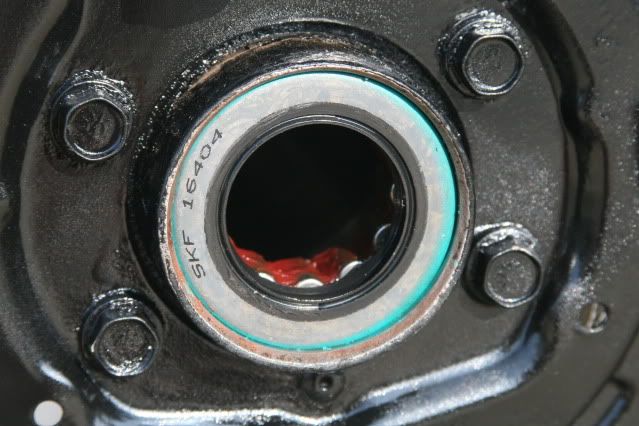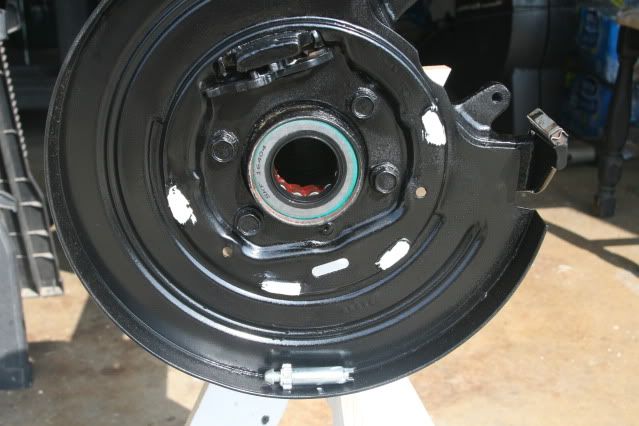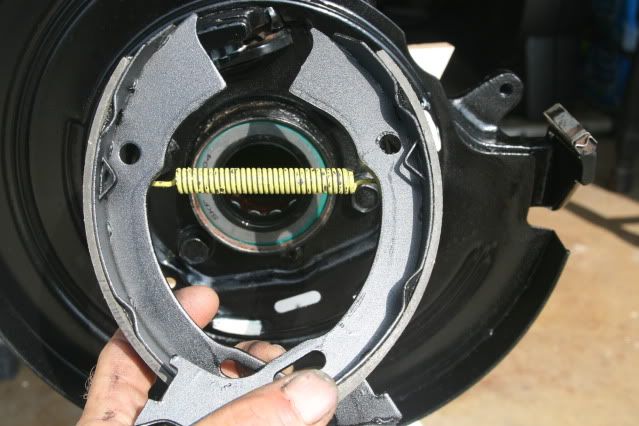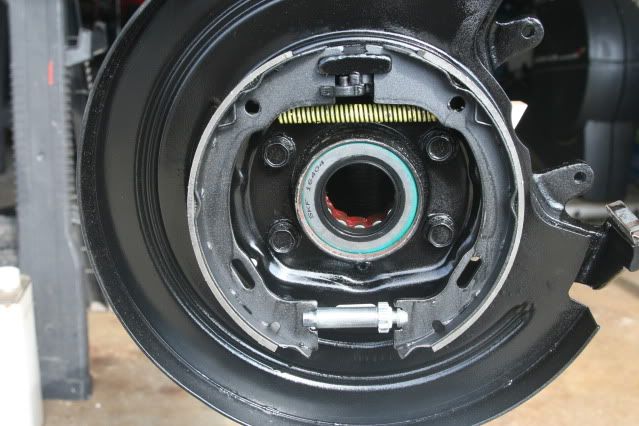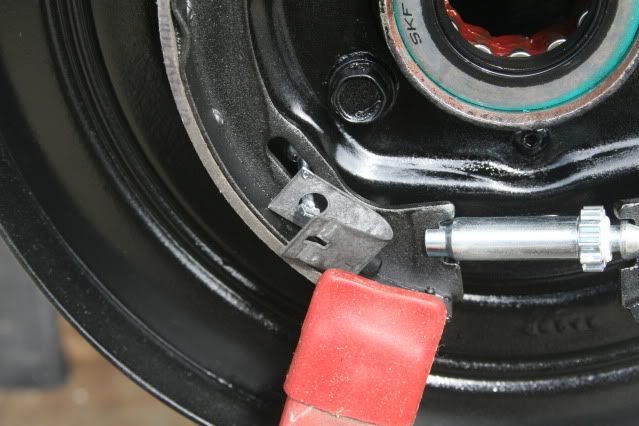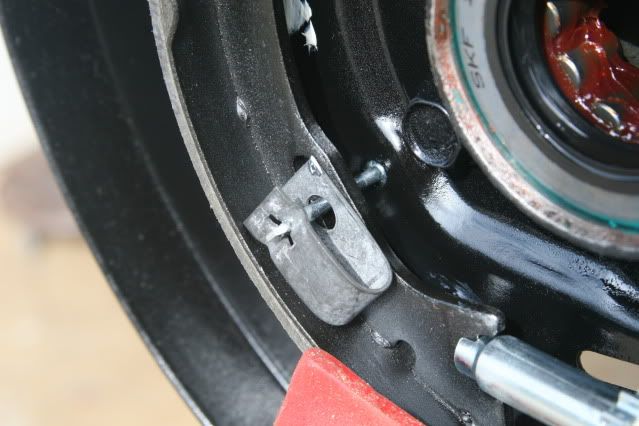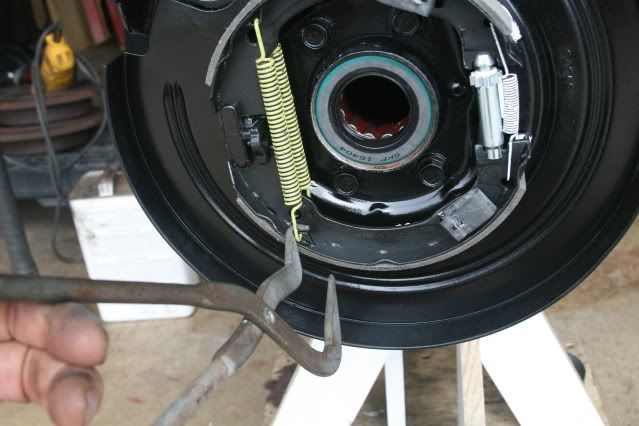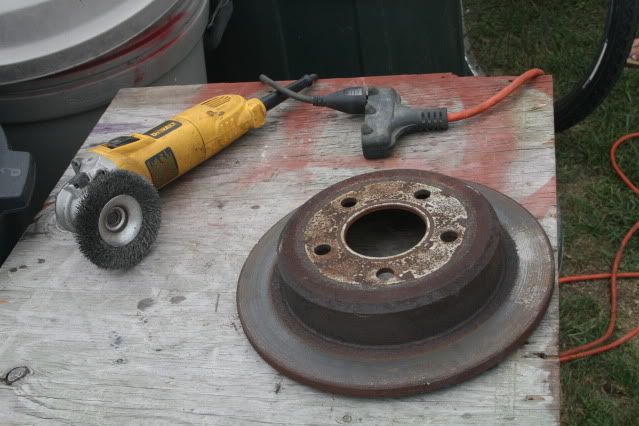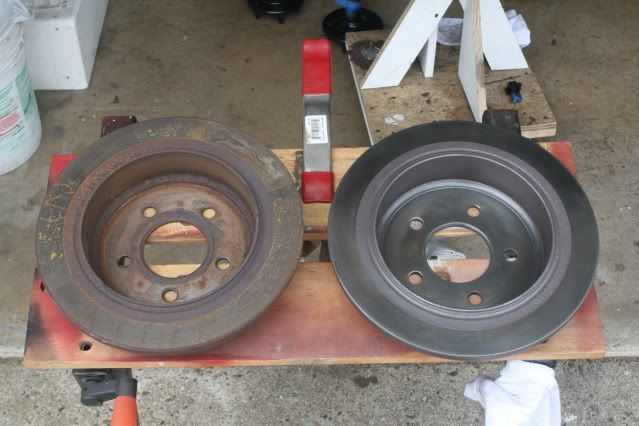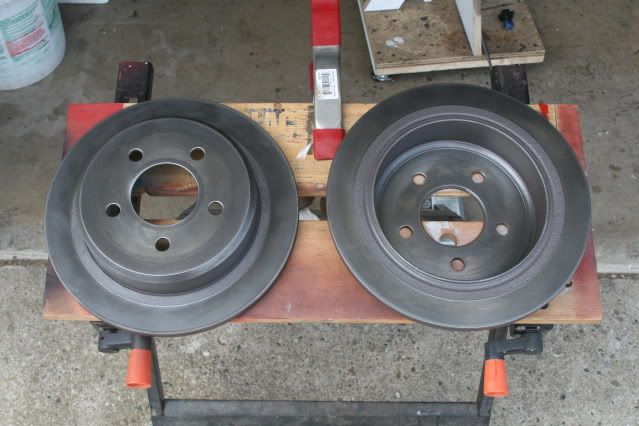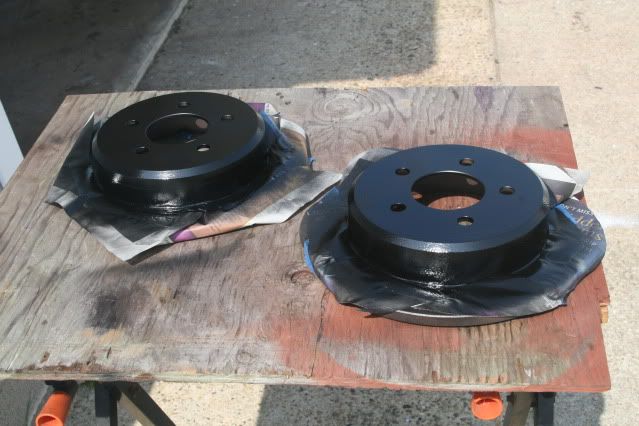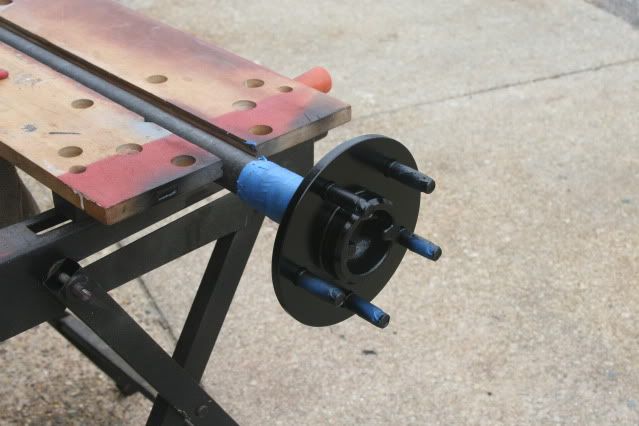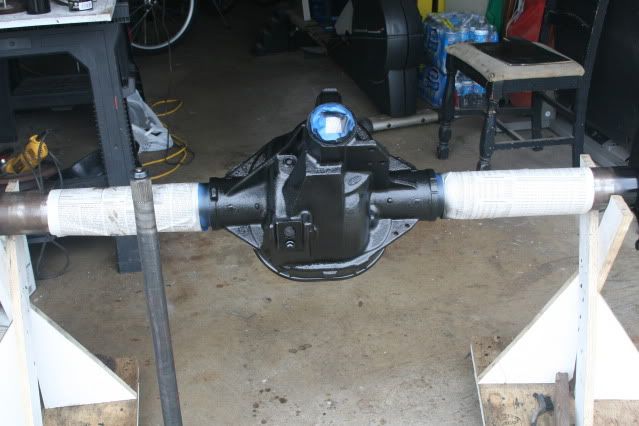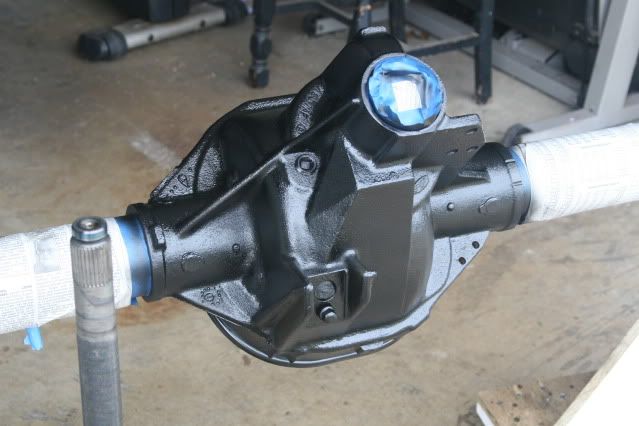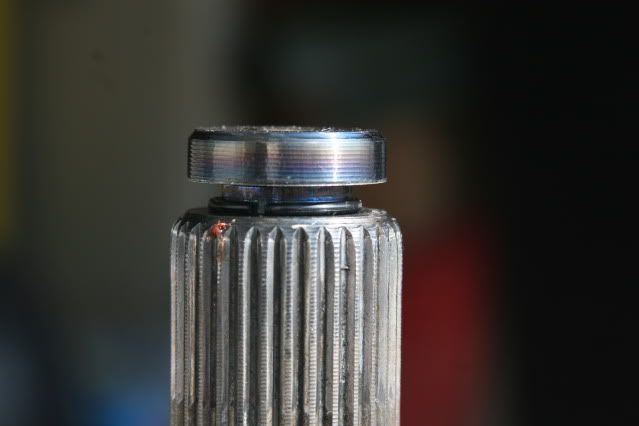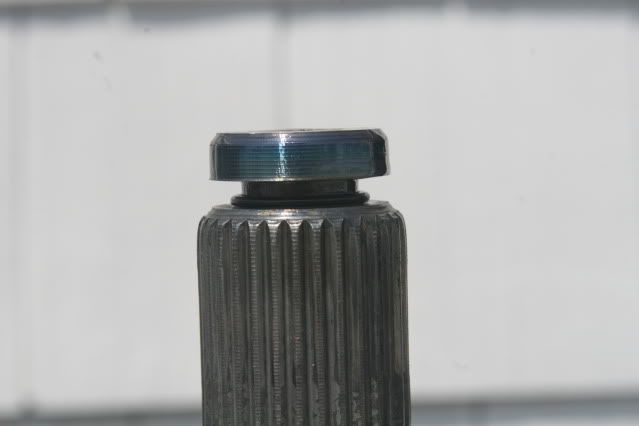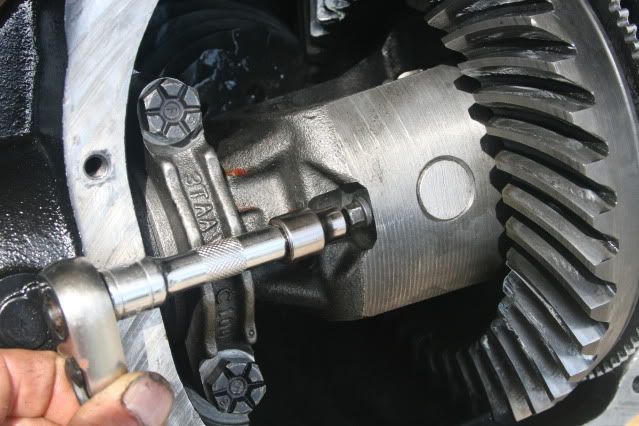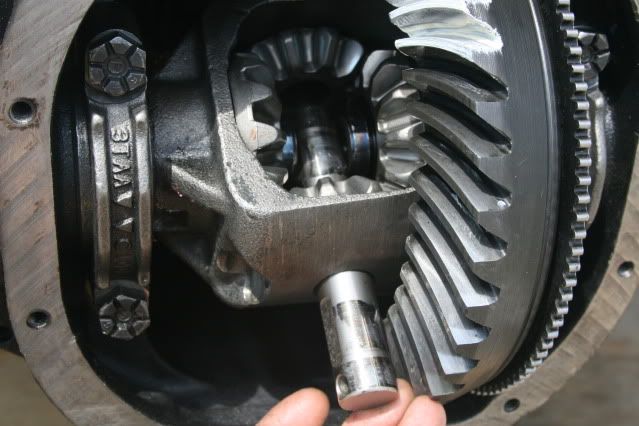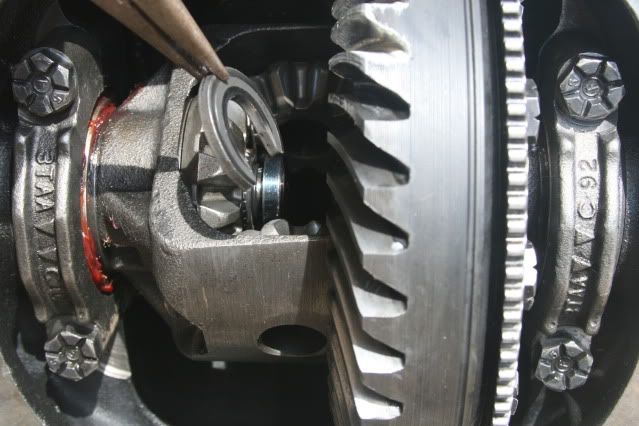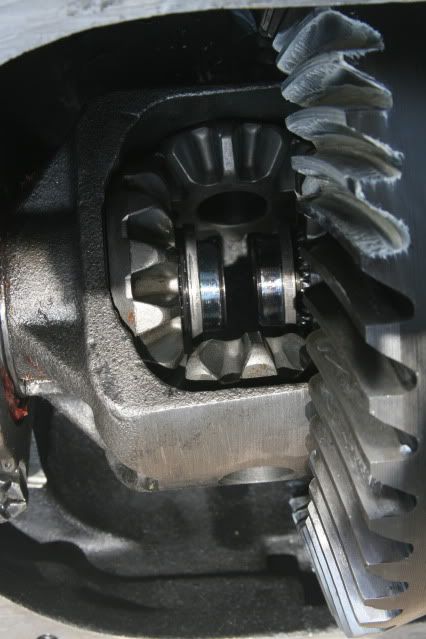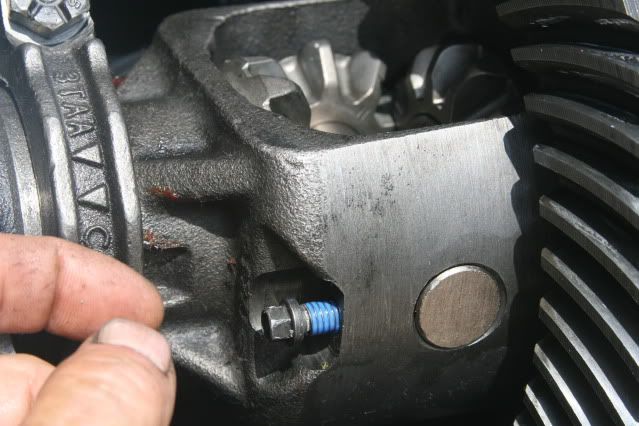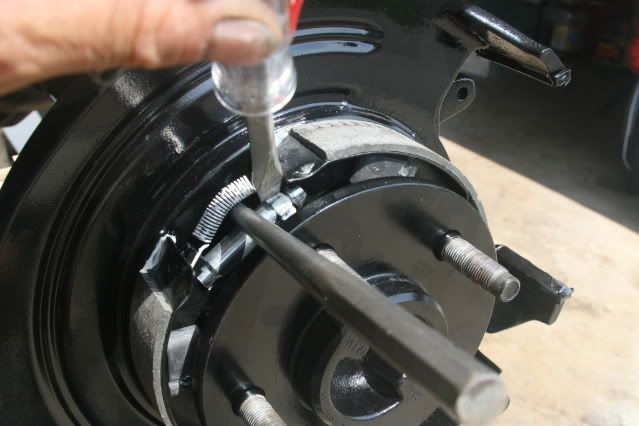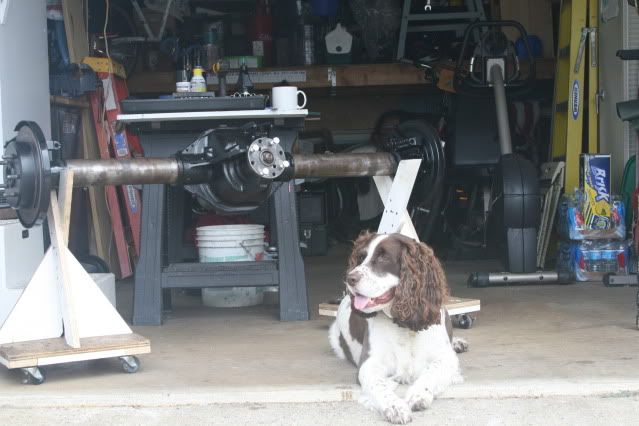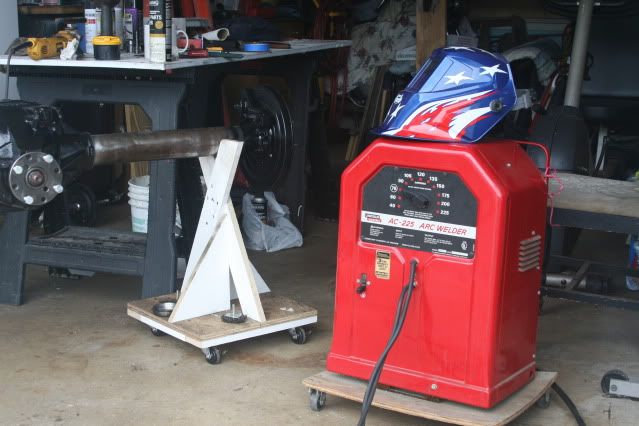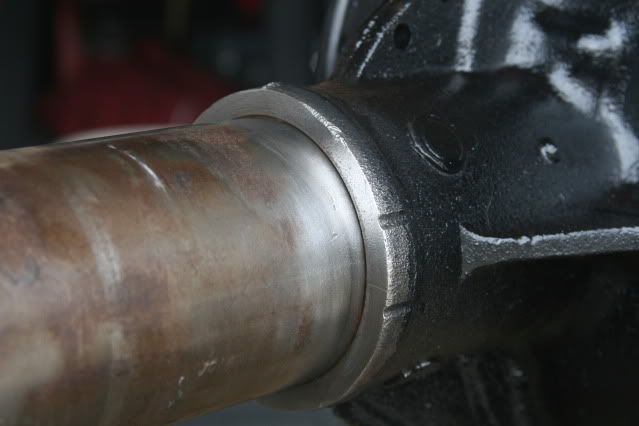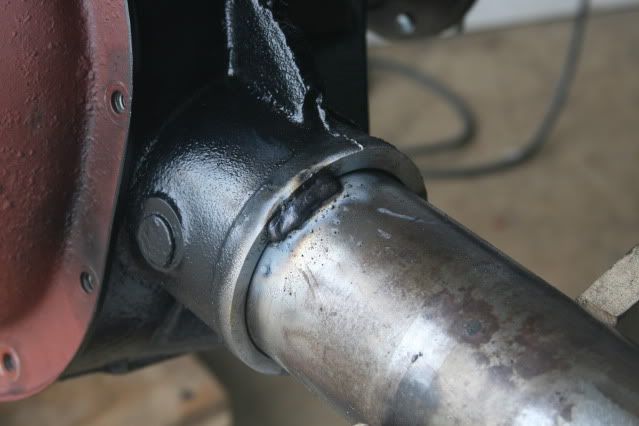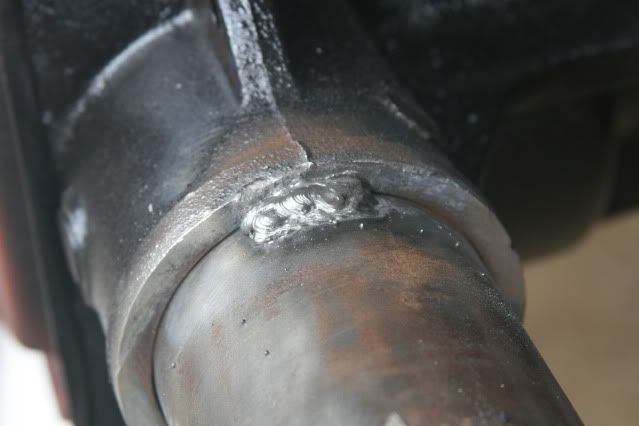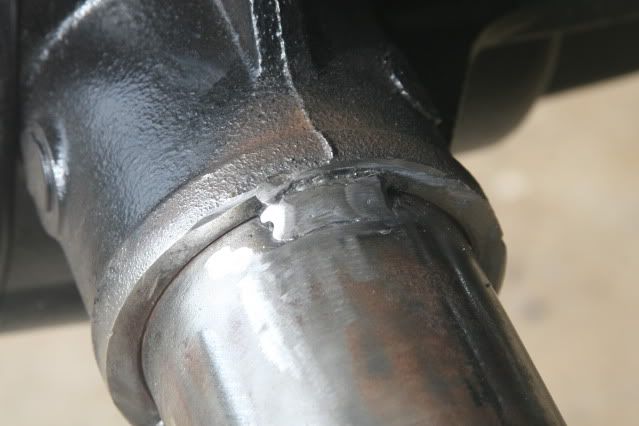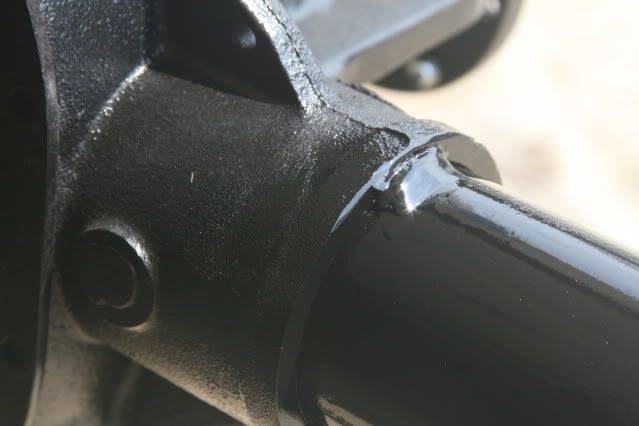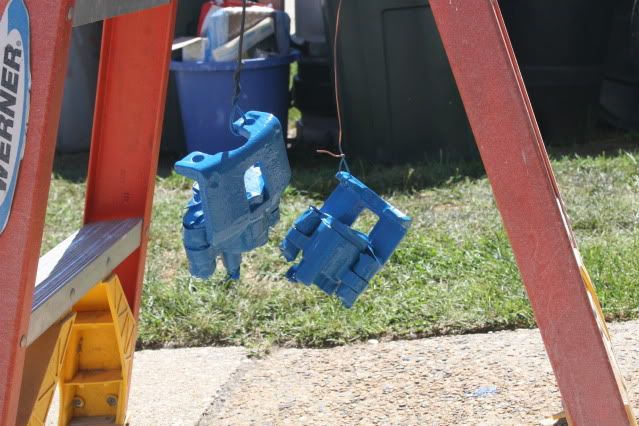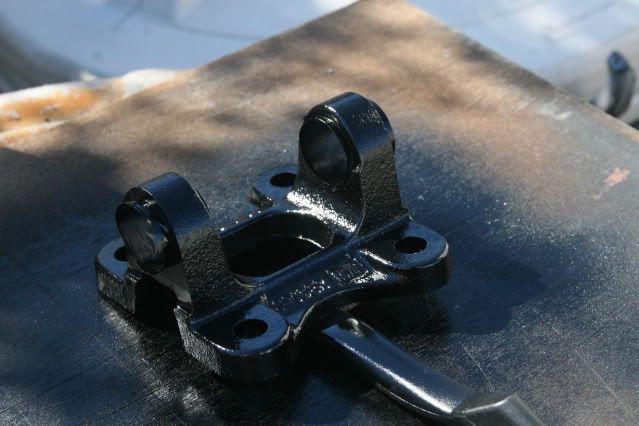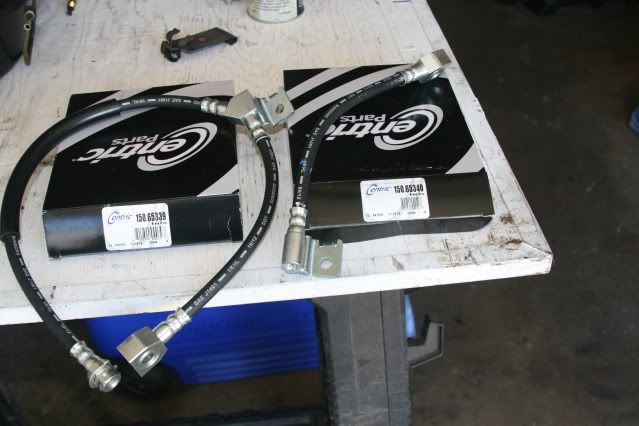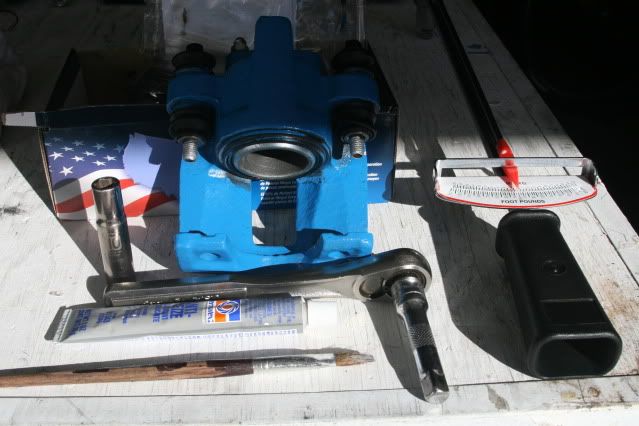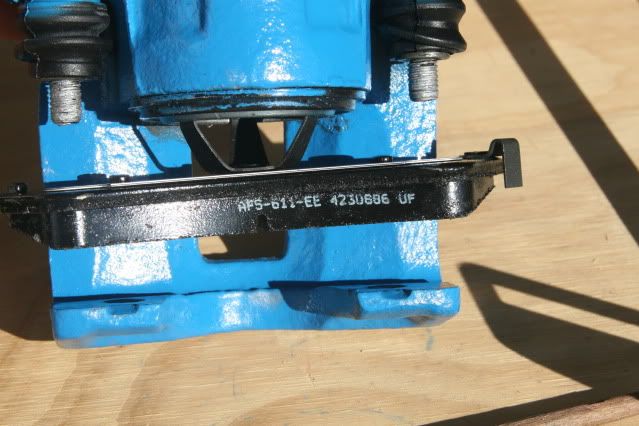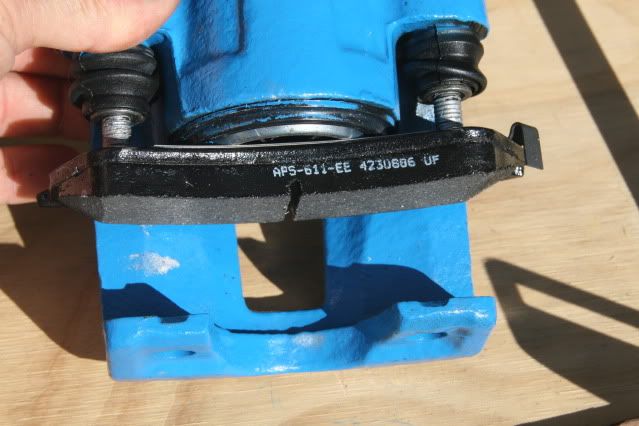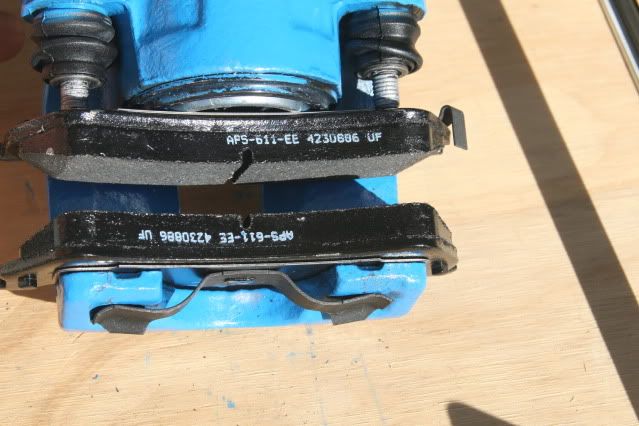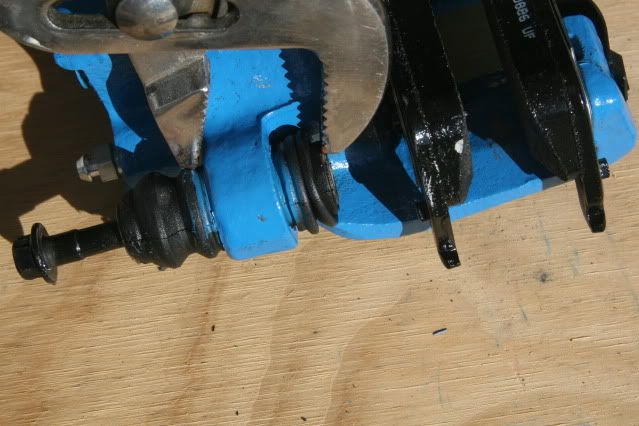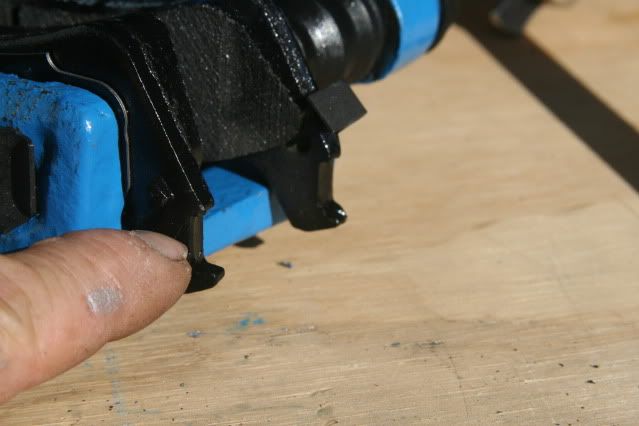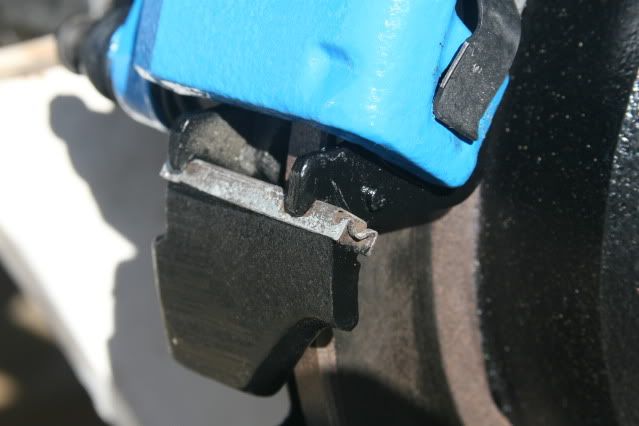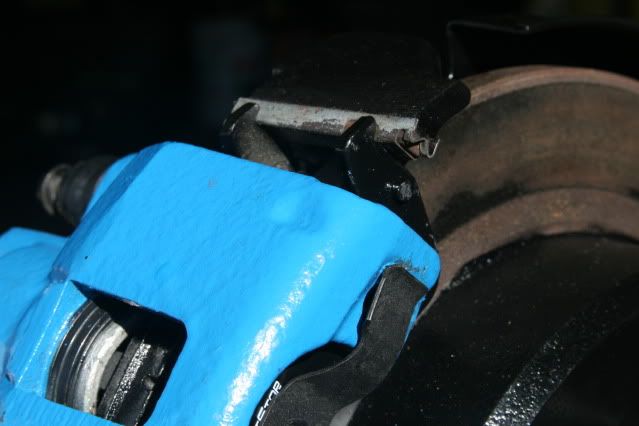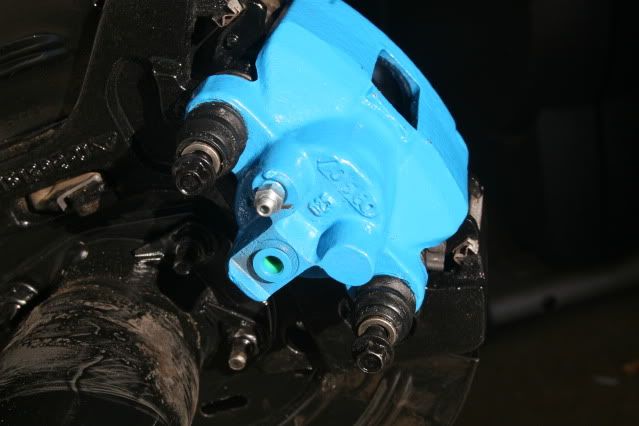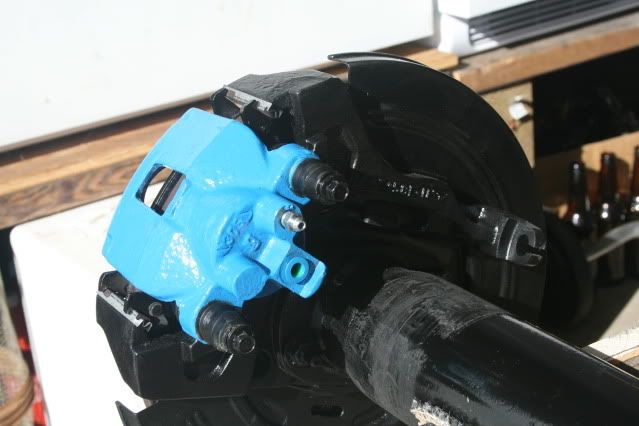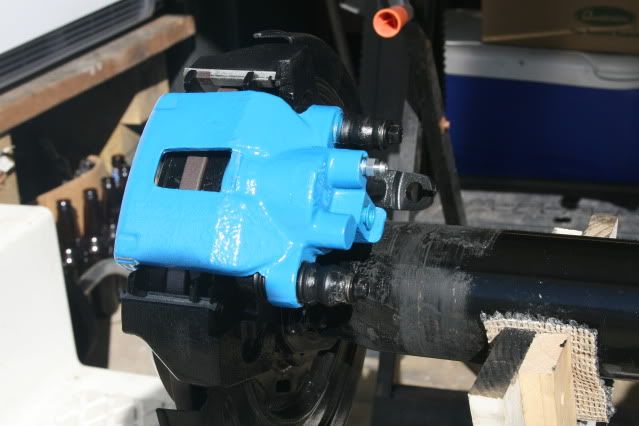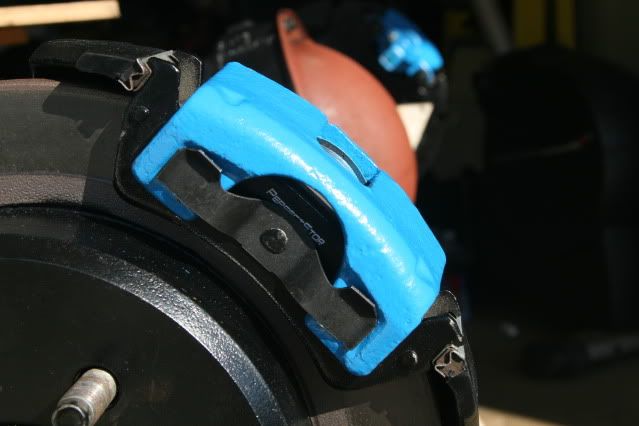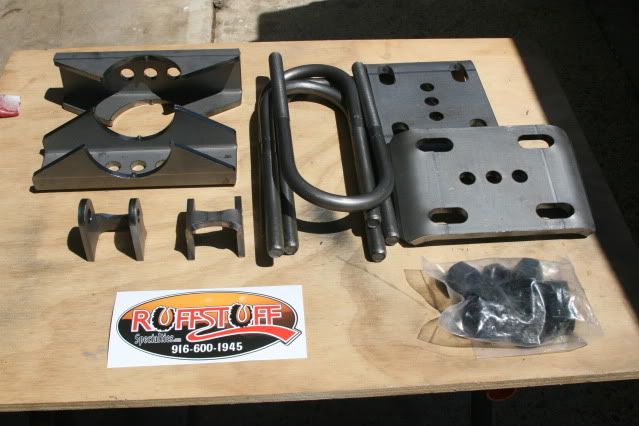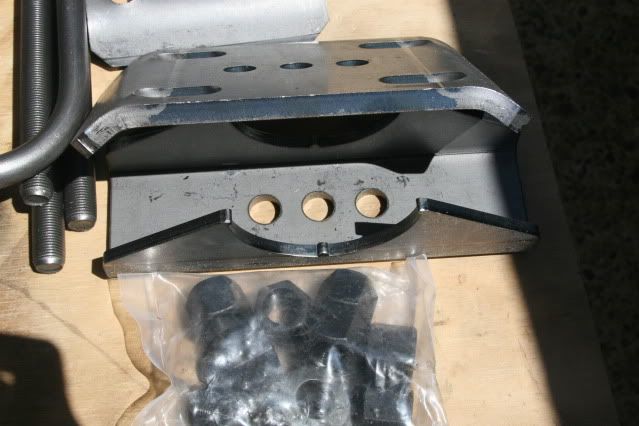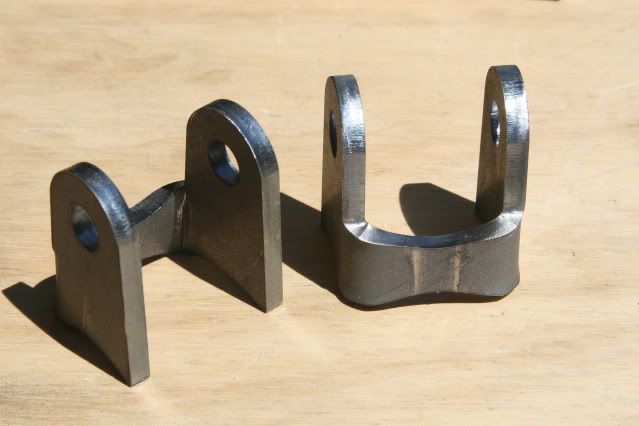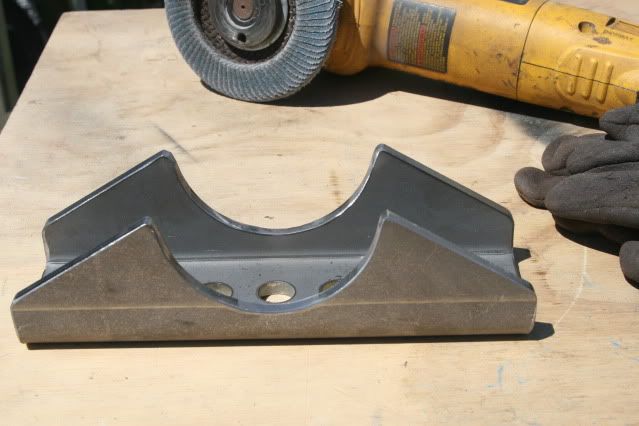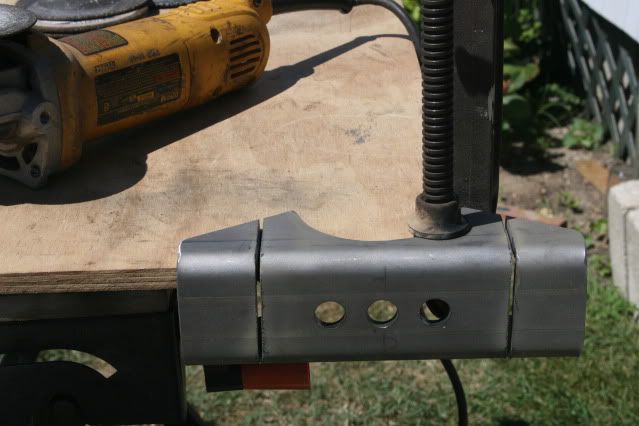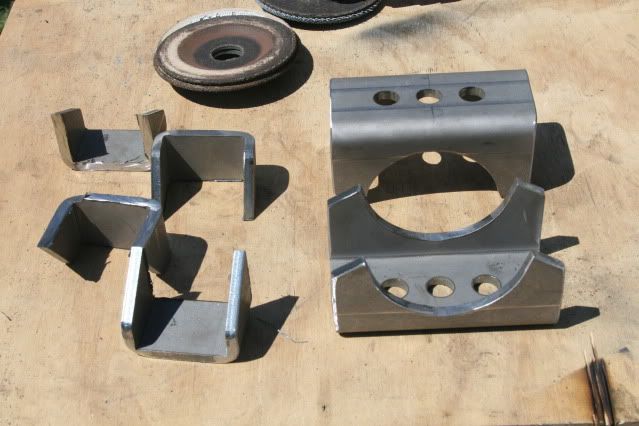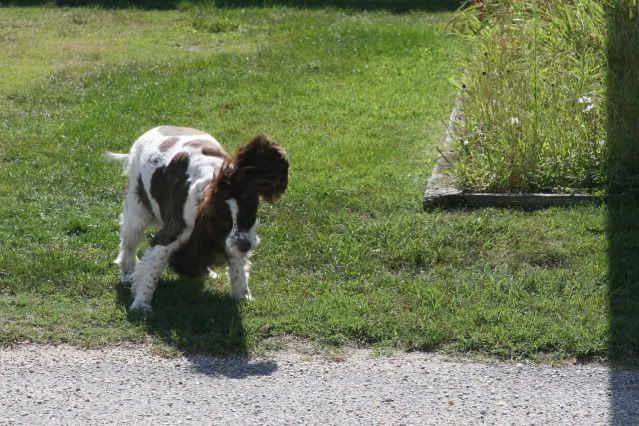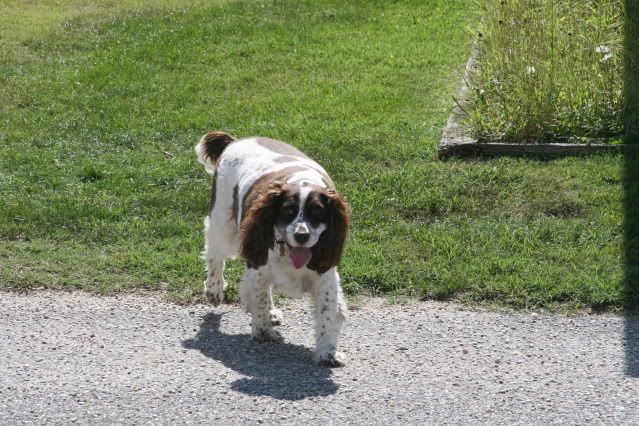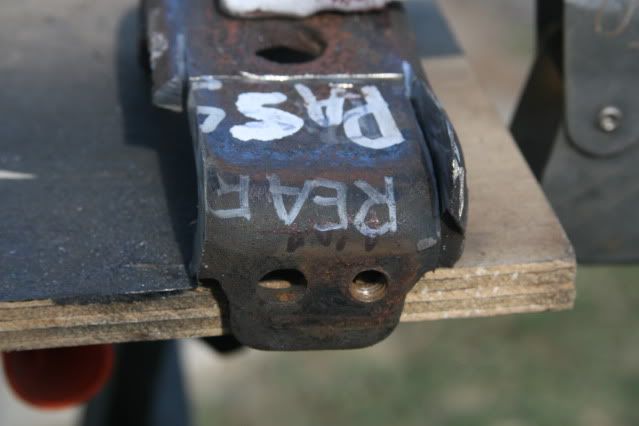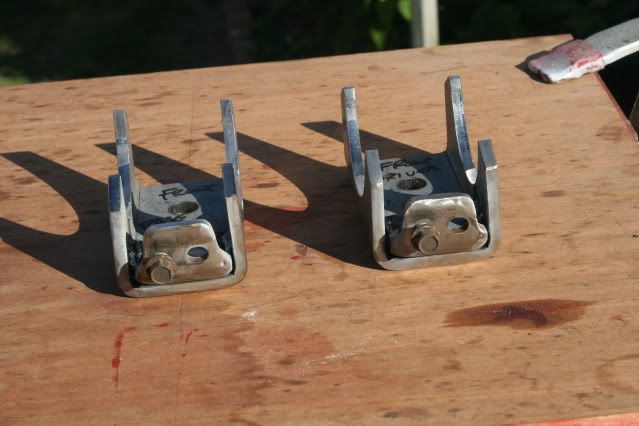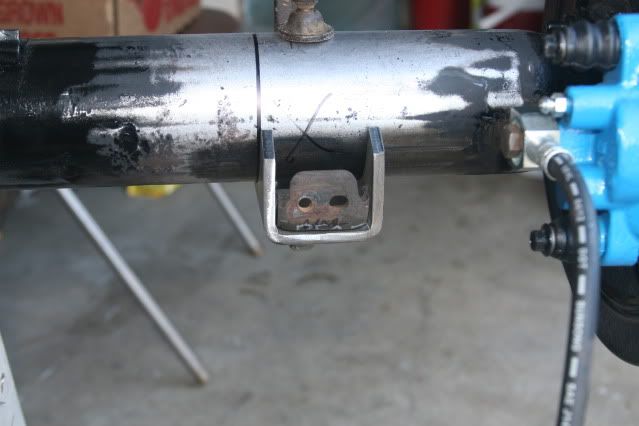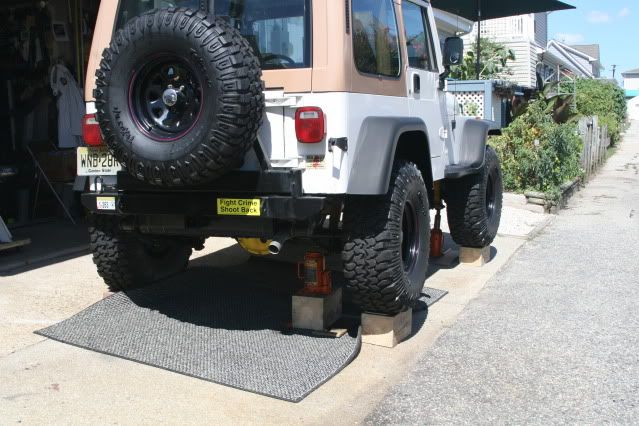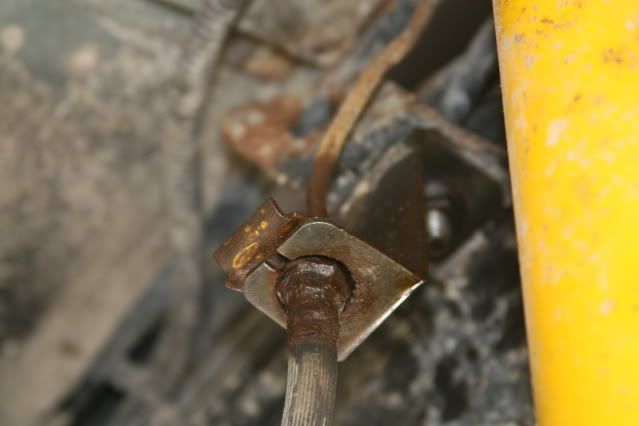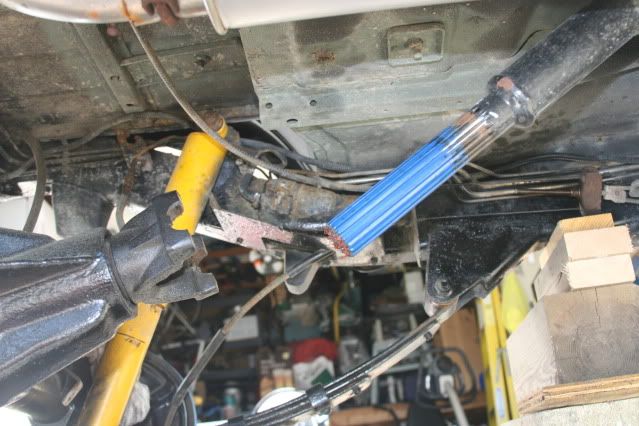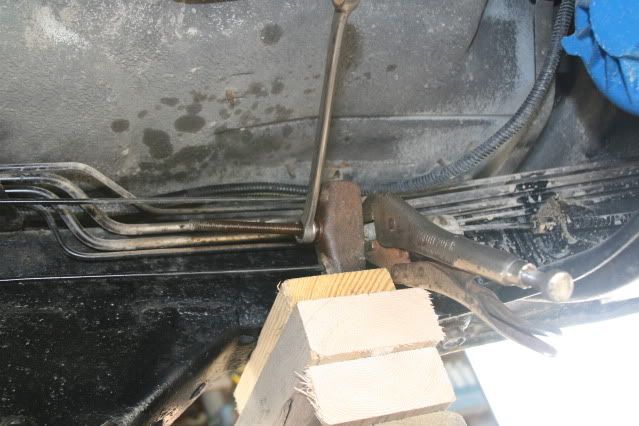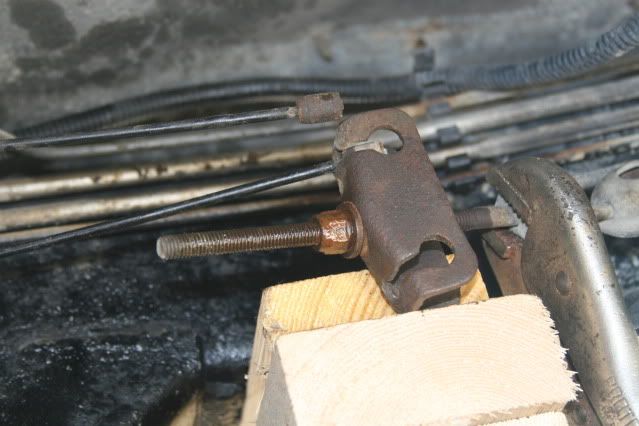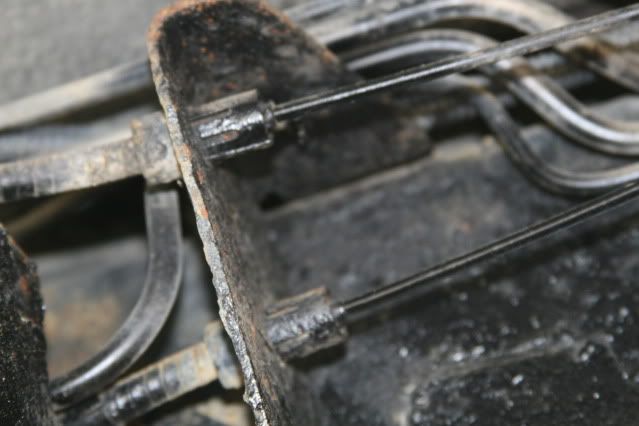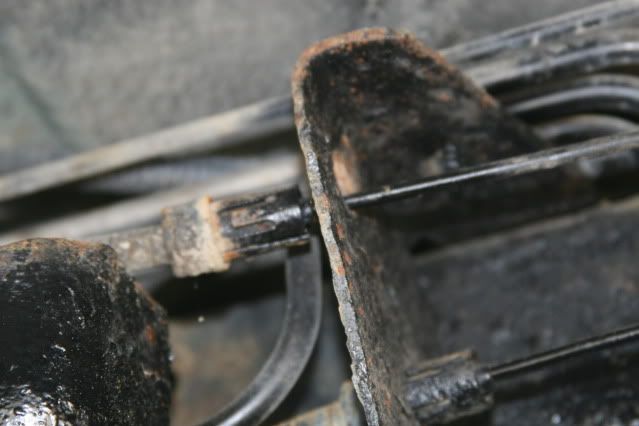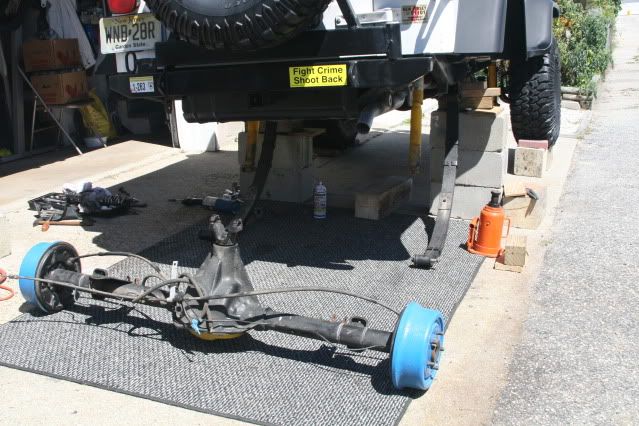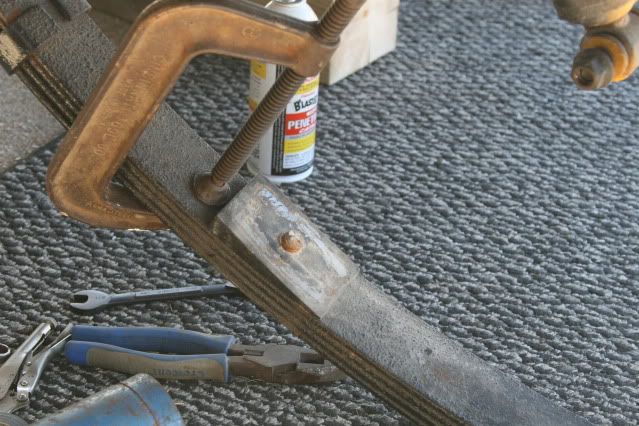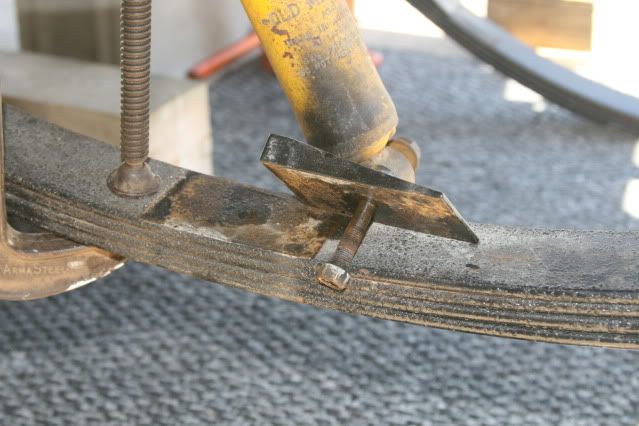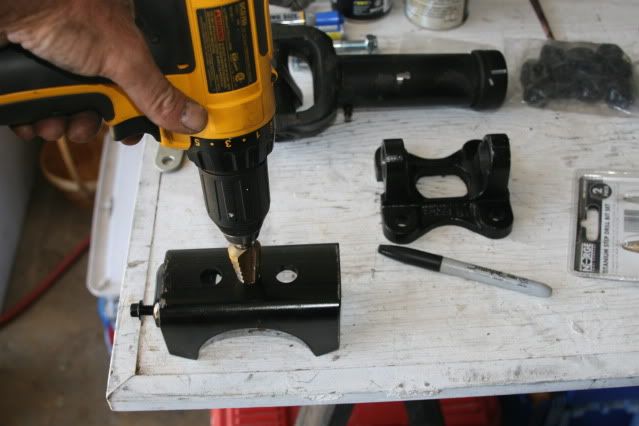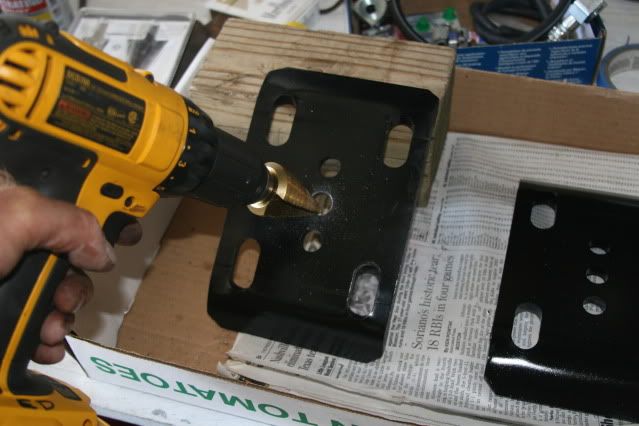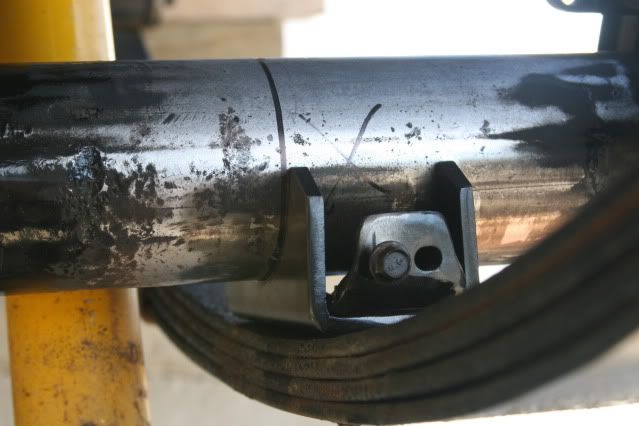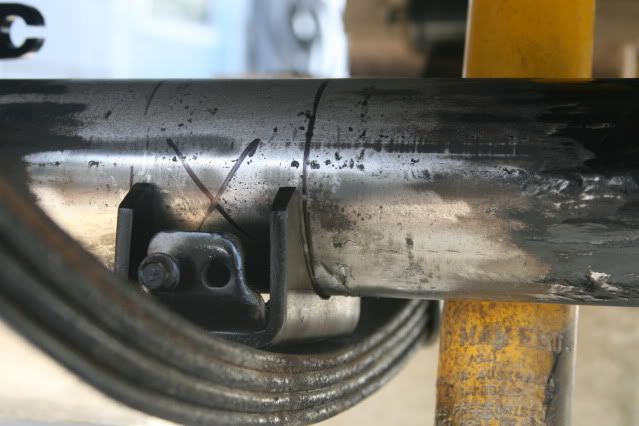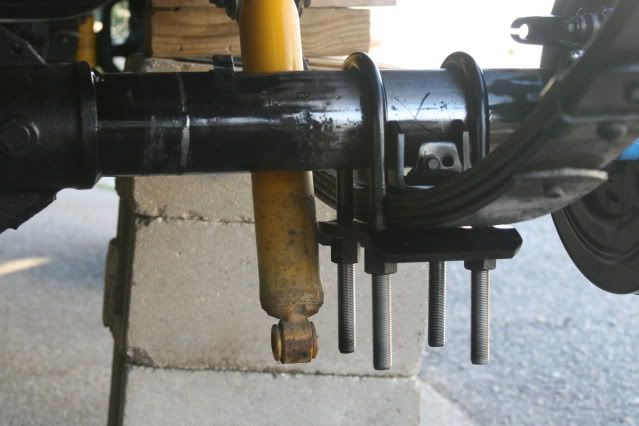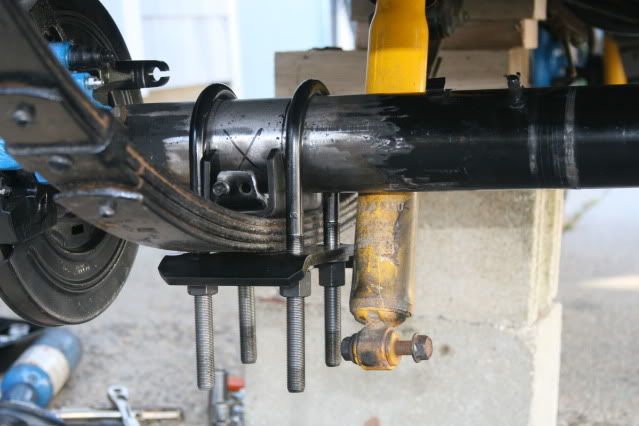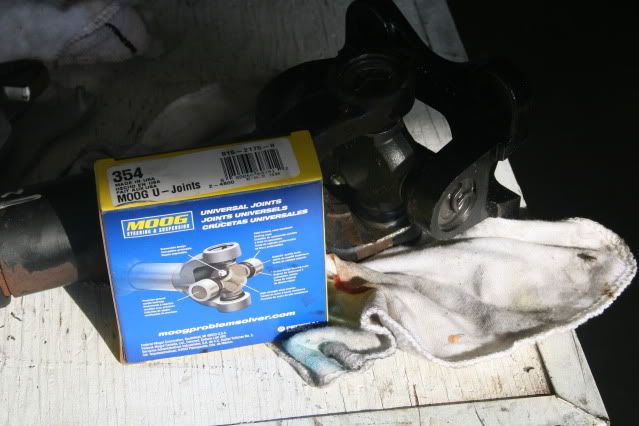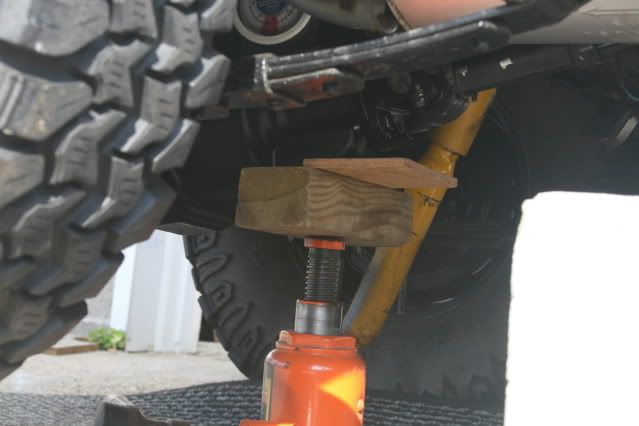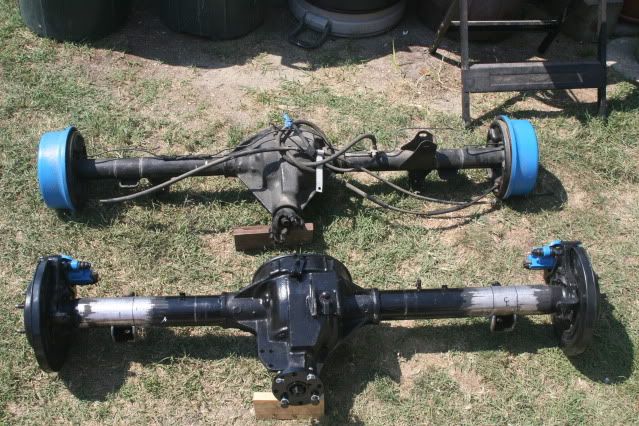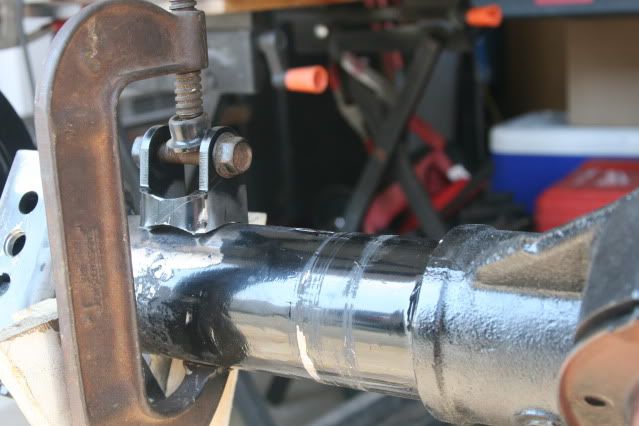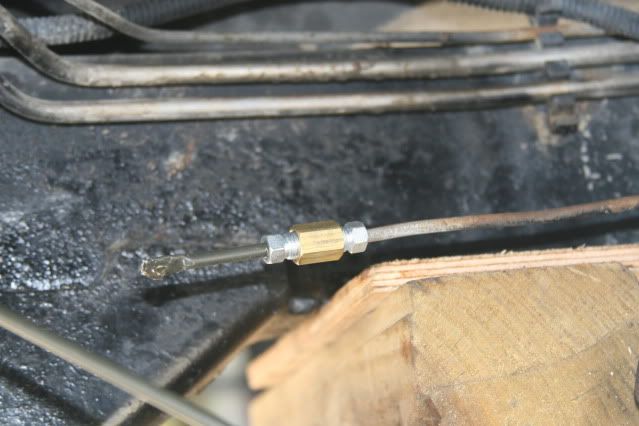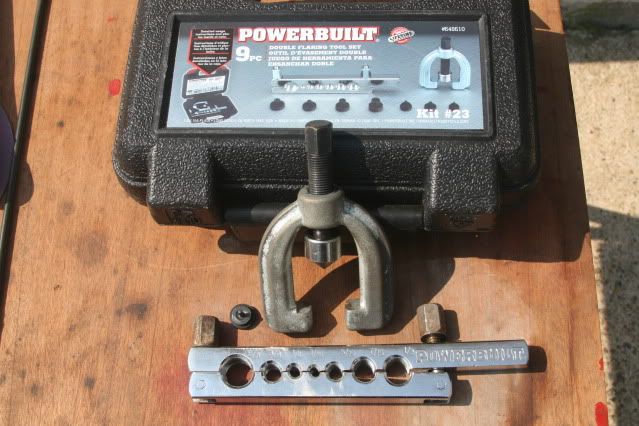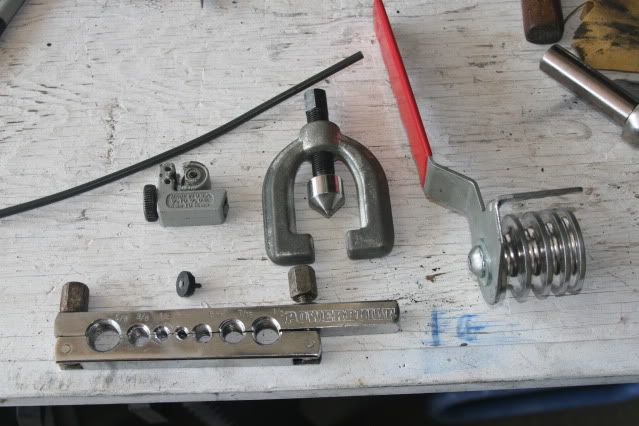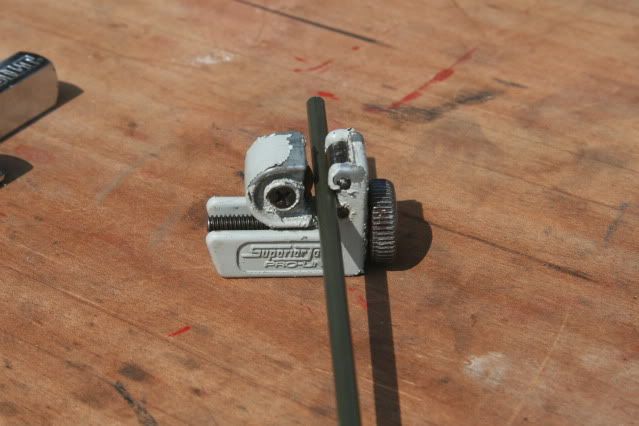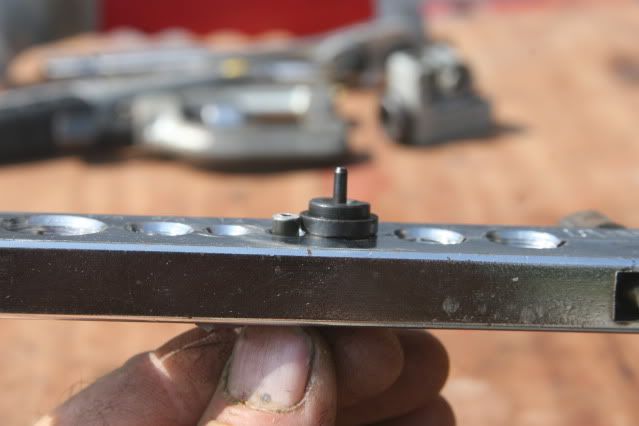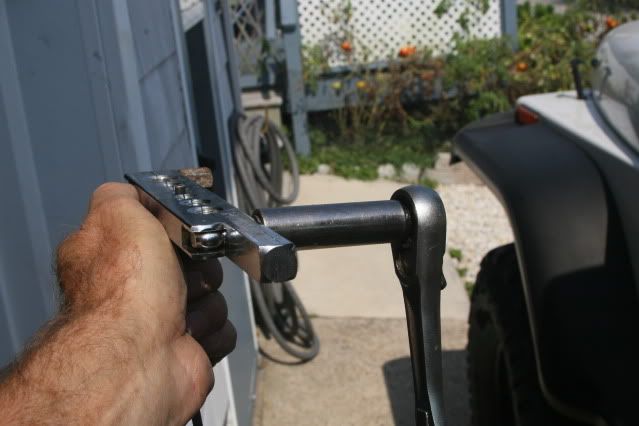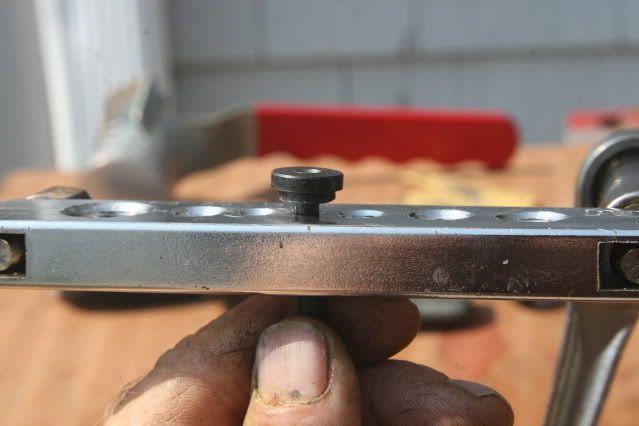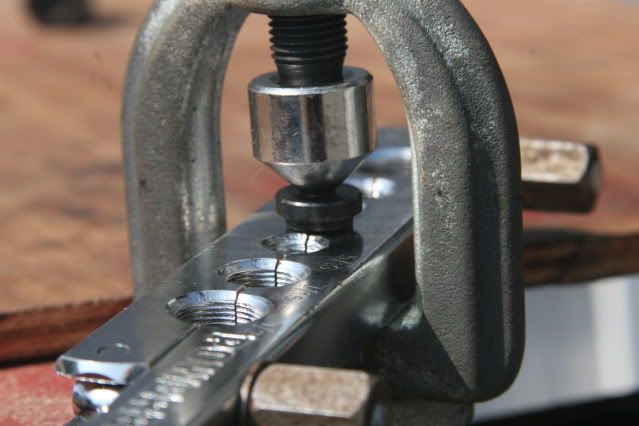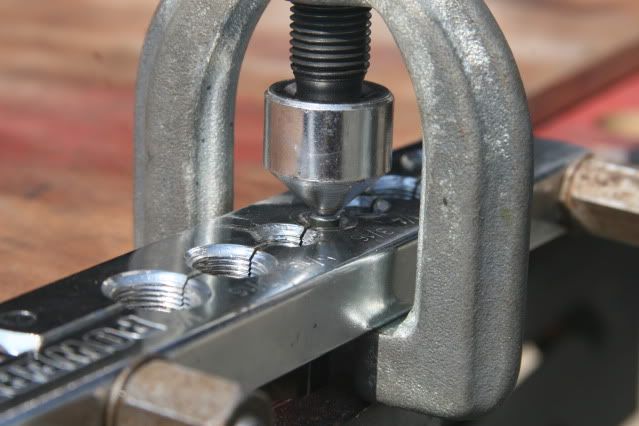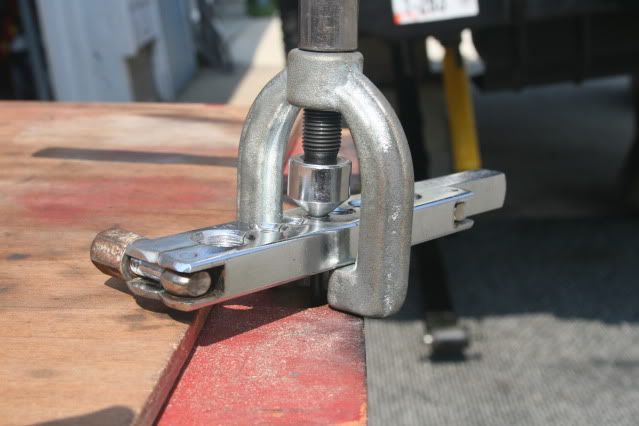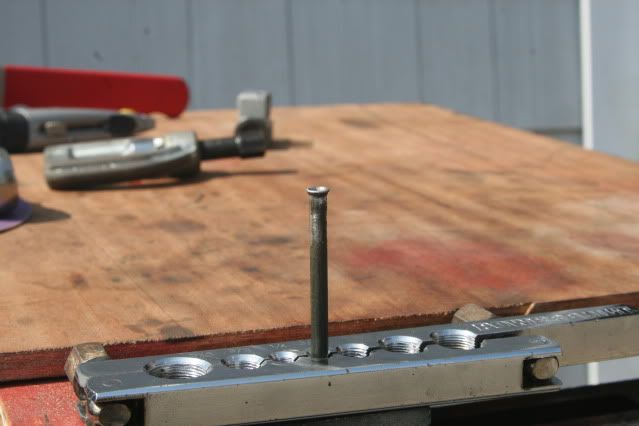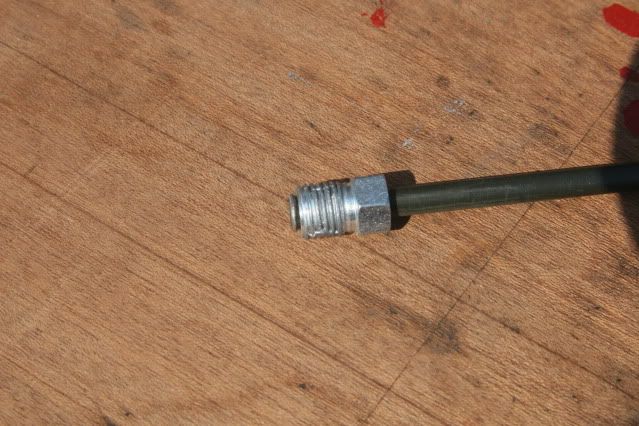The Carrier Bearings are in perfect shape. After a thorough degreasing and inspection I elected to leave them alone. The Pinion Bearings are another story.
With all the play in the Pinion Flange, and no Pinion Bearing Preload, these need to be swapped out.
Pinion Bearing Inner Napa P/N M802048
Pinion Bearing Cup Inner Napa P/N M802011
Pinion Bearing/Cup Outer NAPA P/N BR52
Pinion Seal NAPA P/N 18136
Using a Drift pin, tap out the Pinion Cups (Races). Access to the edges can be had through the oil galleys.
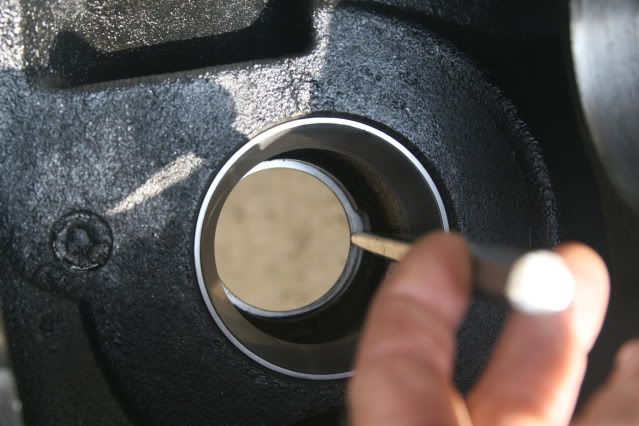
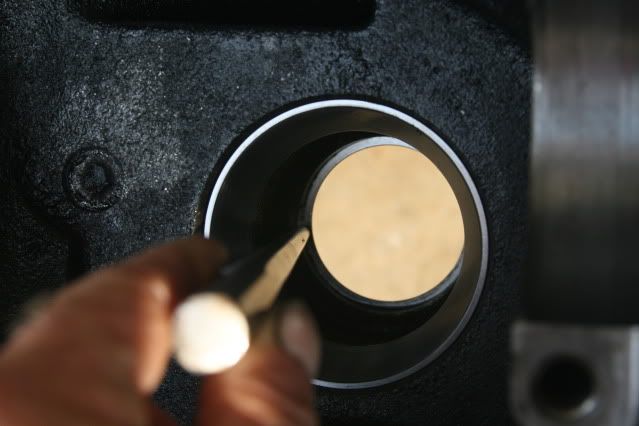
This is what you're after.
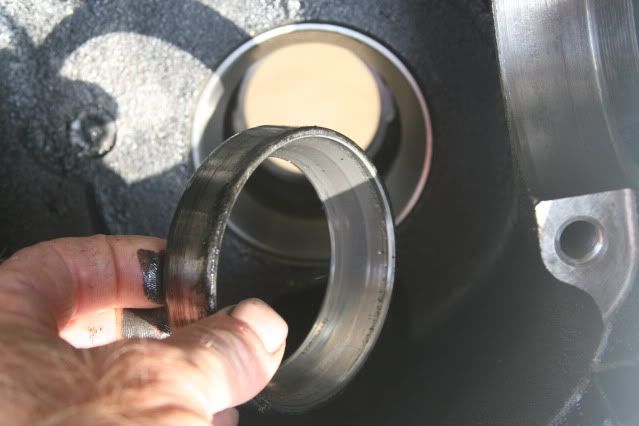
Clean surfaces, lightly oil cup seat and edges of new cup and drive to seat using 81mm Drive on Inner and 65mm for outer.
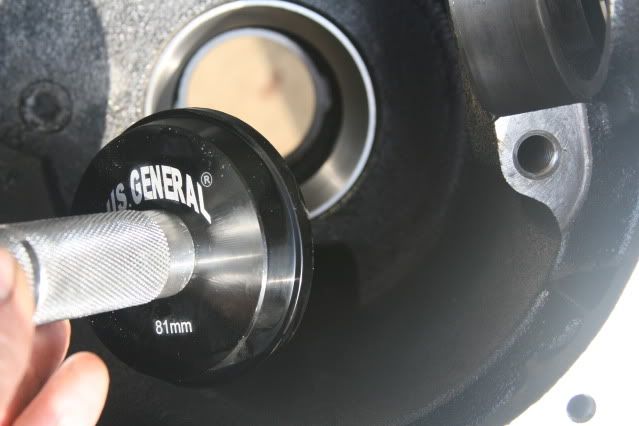
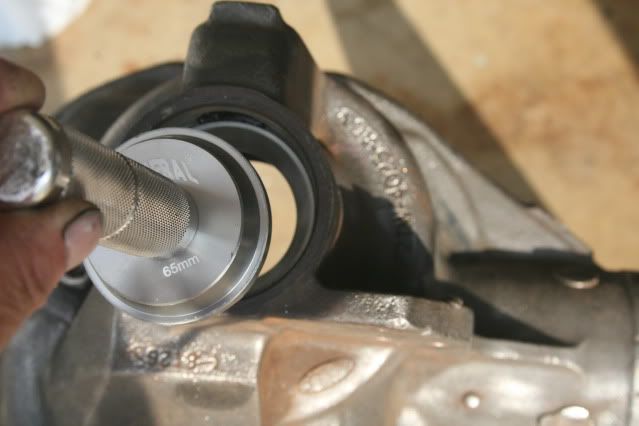
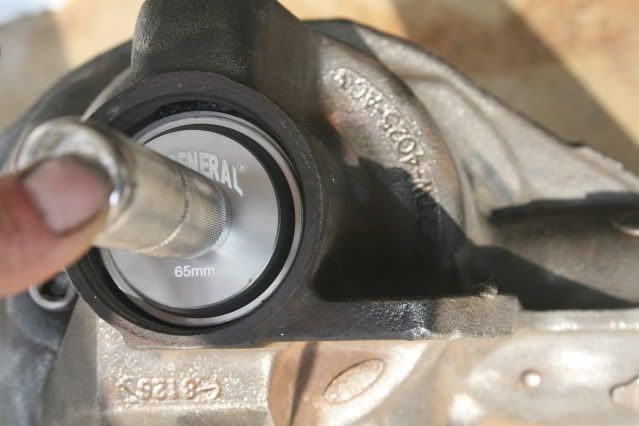
Races (cups) completed, ready for Pinion install.
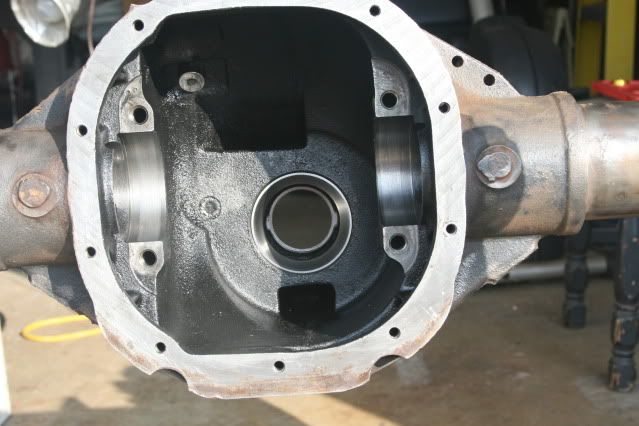
I used a friend's Shop Press to swap inner bearings. No mystery here...press off, press on. There was a factory shim between the pinion gear head and the bearing. This was cleaned up and reused. Prelubed and ready to go in.
From the top down...Oil Shield, Outer Bearing (both loose and slid on for visuals), small gap where Crush Sleeve will live, Inner Bearing, Shim and Pinion Gear Head.
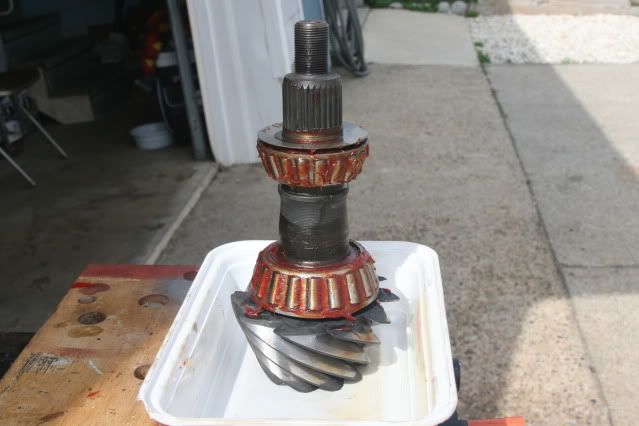
Crush Sleeve was Dealer Item P/N B7A-4662-A Spacer-Pinion
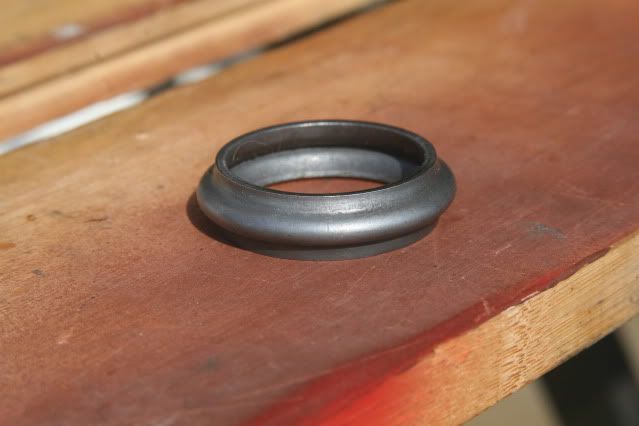
Pinion Nut was Dealer Item P/N 389546-S100 Nut-Flanged
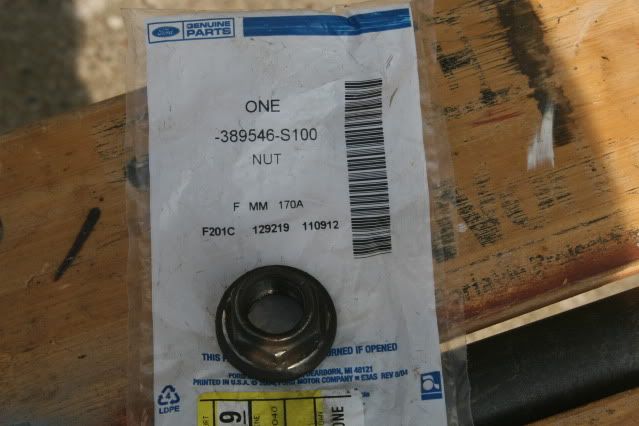
Here's the part that is really easy. The only problem was both hands full of grease so I wasn't touching the camera...:nono:
I rotated the axle to pinion up in the cradle. Placed the Outer Pinion Bearing in the race with the oil shield on top. Next a bead of RTV and tap in the Pinion Seal. Also run a light bead of RTV around the splines in the Pinion Flange, about halfway up the shaft.
Slide the Crush Sleeve onto the Pinion Shaft and slide the assembly up into the housing from below. It'll pick up the Outer Bearing and Shield as it comes through the back of the housing.
Tap the Flange Yolk into place while holding the Pinion up and start the nut. Now it's hangin there lookin nifty. :thumbsup:
It should be noted at this point that I used the old nut with a little oil under the cap to reduce friction. I will crush the sleeve most of the way with this one, then remove it, clean the area and replace with the new one for final setup. The new nut comes preloaded with Threadlocker.
Cranking down on the Crush Sleeve can be a chore with the axle out of the vehicle. It wants to flip all over the place. I set it on the ground and had a beefy neighbor hold down one end. You can see a drift pin through the flange bolt hole at the 3 o'clock position to keep the flange from rotating.
1 1/16" Hex socket, 3ft Breaker Bar and a 5ft section of Big Rusty Pipe (henceforth known as the BRP). Worked just fine.
Began cranking the Pinion Nut tight using a regular 1/2" ratchet. Jumped to the Breaker Bar, then added the BRP.
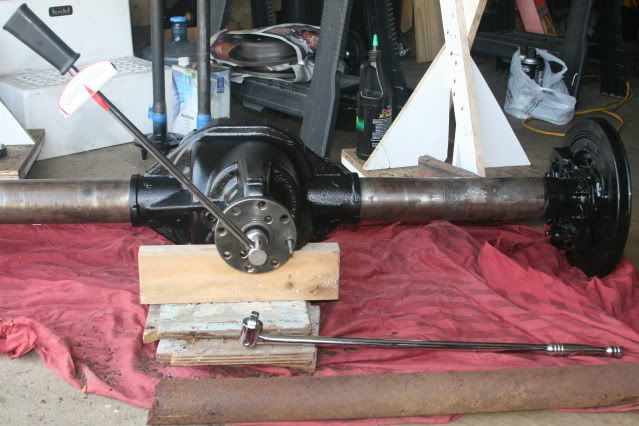
As the nut tightens, periodically check the Flange for resistance to rotation. You did beg, borrow or steal an inch/pound Beam-style Torque Wrench, Right?

Now it's an 1/8th of a turn and check preload. 1/8th of a turn and check preload.
You're looking for 8-14
in/lbs of resistance on used gears and 16-29
in/lbs for new gears. It may take a little more pressure to start the rotation but read your Beam Torque Wrench while rotation is underway...
When I got close I backed off the old nut, cleaned up the area and installed the new one, then tightened to my final values. If you overdo it here you're getting a new Crush Sleeve and starting all over, so be patient.
I settled for 22
in/lbs of Pinion Bearing Preload. Used gears but new bearings. Should be good to go.
Time to drop the Carrier back in. Fully degreased and Bearings prelubed. I lightly painted the pinion and carrier Gear Teeth with 75-90w Gear Oil to get a smooth mesh. Races held in place with shims on their proper sides, drop that puppy into place. Place Bearing caps in their proper orientation and lightly tap em to seat. Clean Cap Bolts, add Threadlocker and Torque to 75
ft/lbs.
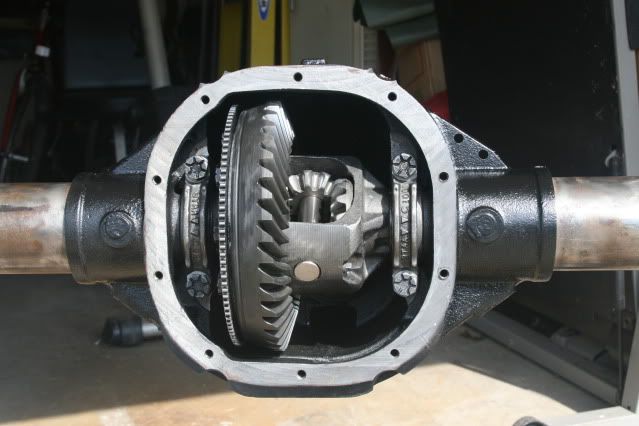
Time to see how I did.
Harbor Freight once again for a Dial Indicator and Magnetic Base. ($14 & $12 resp.)
Set up 90* to a Ring Gear Tooth and Set Dial to Zero. Hold Pinion and rotate Ring Gear til it engages the Pinion. You're looking for a value of .010, the amount of "play" in the Ring gear before it wants to move the Pinion.
Zeroed out
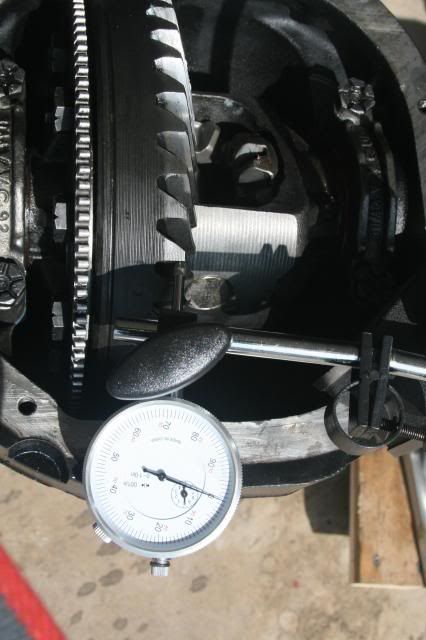
.010 Backlash on the money!
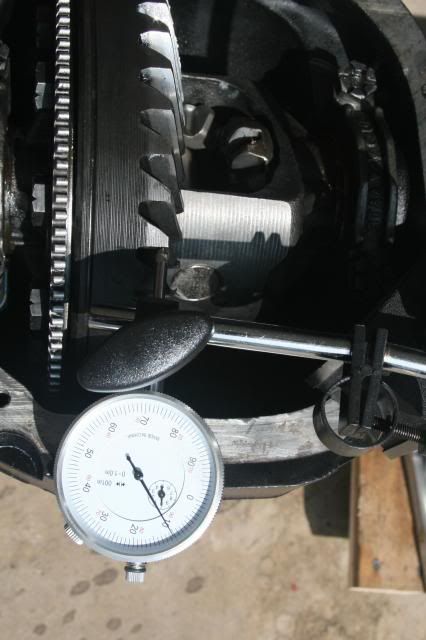
Now to check the Pattern. White Lithium Grease for Marking Compound.
Fingers crossed...
Drive

Coast

New Pinion Bearings and correct Pinion Bearing Preload has brought the drive side down to the center of the tooth with diffuse edges. Nice contact. Most excellent.
Coast is a tad high but well within spec.
Moving on....!:cheers2:
 , but when I came across this 8.8, I couldn't pass it up. From a 98 Explorer.
, but when I came across this 8.8, I couldn't pass it up. From a 98 Explorer.